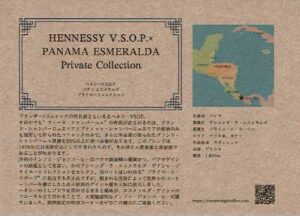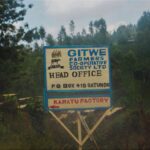
以下、ホセ・ルイス・ロシャ(José Luis Rocha)「コーヒーのクロニクル:歴史、責任、そして疑問」(The Chronicle of Coffee: History, Responsibility and Questions)の日本語訳である。
The Chronicle of Coffee: History, Responsibility and Questions - Envio:https://www.envio.org.ni/articulo/1523
コーヒーのクロニクル:歴史、責任、そして疑問
120年前に立ち上がった人々の子孫が、今日も飢えに苦しんでいる。彼らの悲劇は、コーヒーの衰退を物語っている。それは不可逆的なものなのか?今こそ経済的変革の時だが、その準備はできているのだろうか?我々にそれができるのか?
ホセ・ルイス・ロシャ
今からちょうど120年前の1881年8月18日早朝、弓矢と散弾銃で武装し、強制労働の廃止を訴える3千人近い先住民が、マタガルパ市を囲むフェンスを突破した。「これ以上、我々の民衆に激しい鞭を振るうことはできない……無駄な労働をさせるために、一人の人間も渡さない。私たちをインディオと見なし、くびきの下に置こうとしている。さて、今日はもう我慢の限界だ」。その夜、彼らはさらに大勢加わって、白い綿のスモックを照らすオコテ(ocote)の枝の松明に導かれて、先住民たちが村々と呼ぶ「グレン(glens)」から降りてきた。それから3日間、即席ではあったが、この大規模な先住民の軍隊はラディーノ住民に戦いを挑み、街の大部分を彼らの支配下に置いた。
土地収用と血による「平和化」
19世紀ニカラグアで最も激しい先住民の反乱であったが、ニカラグアでは忘れられた戦争のひとつである。この戦争は、「30年」保守政権の3年目に起こったが、実際には35年間(1857~1892年)続き、先住民の土地を収用して大規模なコーヒー・プランテーションを作る基礎を築いた。グラナダ出身の純血貴族ホアキン・サバラ(Joaquín Zavala)が当時の大統領で、反乱を鎮圧するために、最も血に飢えた代議士の一人、ミゲル・ベレス将軍(General Miguel Vélez)を送り込んだ。彼の息子は反乱を鎮圧するために、反乱軍の手によって死亡していた、ベレスの息子は四つ裂きにされ、その遺骸は首の冠をかぶせられ、籠に入れられて人目にさらされた。激怒した父親は、その使命を熱烈に遂行した。マタガルパ周辺の丘陵地帯、谷間、渓谷の全域で5ヶ月間続いた迫害の間、少なくとも500人の先住民の反乱軍が戦死し、さらに多くの人々が殺された。反乱のリーダーであったロレンソ・ペレス(Lorenzo Pérez)とトリビオ・メンドーサ(Toribio Mendoza)は銃殺された。同年、さらに多くの反乱が起こり、中北部と太平洋地域の多くの都市が包囲され、攻撃された。約5,000人の先住民が戦死し、その後の「平和化」プロセスでさらに多くの人々が命を落としたと計算されている。
各先住民の村には長老会議と軍事組織があり、それが政治的・軍事的自治の基盤となっていた。それまで中央政府は、長引かせたくない譲歩としてしぶしぶ容認していたのだ。反乱は、ラディーノたちの「文明化」の夢を実現するための口実となった。「平和化」プロセスを任された将軍たちは、政治的、経済的、軍事的組織としての先住民共同体排除し、その住民を「他の谷や集落と同等の体制」で集中的に生活させることを究極の目的とする抑圧的な政策を適用した。反乱以前、マタガルパには3万〜3万5千人の先住民が住んでおり、全国人口の10%、県人口の80%以上を占めていた。弾圧、即決処刑、その結果としての移住によって、先住民の人口は激減した。反乱から20年後の国勢調査では、先住民の人口はわずか2万〜2万5千人だった。
「進歩」は彼らの背中に乗ってやってきた
先住民たちは明らかに落ち着きを失っていた。8月の反乱は、3月31日に始まり5月4日まで続いた小規模な反乱に続く、その年2回目のものだった。この反乱は、欺瞞と弾圧の代替策によって巧みに無力化され、実現しなかった改革を約束し、自然発生的な処刑の数を増やした。事件に巻き込まれたイエズス会は追放された。この決定により、最初の武装反乱の失敗後、先住民の多くが転向していた市民闘争の可能性は閉ざされた。
最初の蜂起の3週間前の3月5日、「地主を形成することは祖国にとって良いことである」そして新体制を採用することだけが先住民を無知から揺り起こすことになるという仮説のもとに、先住民共同体の廃止と土地の民営化を提案する法律が可決された。北部に34万エーカーあると推定される先住民の土地の収用は、コーヒー産業の拡大に不可欠だと政府は考えた。弾圧はその日の命令であり、制度によって正当化され、議会はかつてない速さで活動を開始した。同月、別の法律が可決され、コーヒー・プランテーションのために「自発的な労働者や使用人を募集」し、そのような「自発的な」奉仕に服することを望まない者を追及し、軍当局に引き渡す権限を与えられた農業裁判官の存在が定められた。
法律、立ち退き、収用、ラディーノの傲慢さ、コーヒー・プランテーションでの強制労働、電信線の敷設など、すべてが反乱の火種となった。この忘れ去られた戦争の記憶を蘇らせようとしたエンリケ・ミランダ=カシジ(Enrique Miranda-Casij)は、先住民がマタガルパとマナグアの間に敷設される電信線のロールを裸の背中に背負わされ、全く無給で働かされたことを覚えている古いマタガルパンの証言を集めた。ドラ・マリア・テレス(Dora María Téllez)がその壮大な著書『政府に死を!(Muera la gobierna!)』で、「要するに、「進歩」はインディオの背中に乗ってマタガルパとヒノテガにやってきて、インディオに対して確立されたのだ」と述べている。ミランダは、先住民を勇敢で誇り高く、この地域の原住民であり、小さな山の谷間や高原の「グレン」に住んでいると表現する: 「彼らは、同化するか、消滅するかの二者択一の変化の過程を経験した。少しずつ、そして非常に頻繁に、彼らの背中越しに、進歩が彼らの土地を巻き込んでいった。労働力は不足し、農作業は彼らの『自発的な』労働をどんどん吸収していった。自分たちのトウモロコシ畑は放棄され、子供たちは飢え、妻たちは病気になったり死んで埋葬されたりした。彼らの習慣は失われ、社会組織は消滅しつつあった。一方、チチャ(アルコール度数の高いトウモロコシの酒)の製造は明確に禁止された。彼らの土地は収奪され、種を蒔くことができても、収穫は新しい土地所有者と不公平な形で共有しなければならなかった。」
先住民を「減らす」コーヒーブームを可能にした
反乱の爆発的なエネルギーは、徐々に蓄積されていた。先住民は、賃金を稼ぐ農業労働者に引き下げられるという完全なプロレタリア化に、ラディーノ農民以上の連帯感を持って抵抗していた。村での自由な生活を捨ててコーヒー・プランテーションの事実上の奴隷になることを嫌った先住民共同体は、自給自足の農業に逃げ込み、傲慢な扱いを受けたマタガルパのラディーノとの交易を一切避けていた。
植民地時代、「インディオを減らす」ことは至上命題だった。それは、先住民を政治的、経済的に支配するために、先住民を人口集中地区に集め、新しい基本ルールへの服従を保証し、反抗的な行動を防ぐことを意味した。新たな「削減」ーコーヒーブームが動機ーは、支配的集団のニーズに反する慣習を放棄するよう促す「文明化」のメッセージを広めるために不可欠な性向として提示された。彼らの政治的自治権の抑圧がその第一歩だった。先住民を「文明化」することは、彼らの共同体を発展させ、彼らの経済と社会組織をバラバラにし、最終的に彼らがコーヒー・アシエンダの労働力として利用できるようにする、という現実的なプロセスであった。1880年から1891年にかけてのコーヒー生産量の増加は、ニカラグア経済史上、1950年から1966年にかけての綿花ブームに匹敵するものであり、その前夜にも、それを可能にする基盤が築かれていたことを示している。コーヒーの場合、それはコーヒー・プランテーションを作るために、共同体所有地を収用し、大地主の手に蓄積し、収用された先住民を労働力として利用できるようにすることであった。前者は後者につながり、両者が一体となってコーヒー生産システムのブームを引き起こしたのである。
マタガルパのロス・モノス公園:歴史に残る日
政治や教会の指導者たちが新しいマクドナルドやガソリンスタンドを開店させるときと同じように、1881年に電信が開通したとき、当局者たちは 「マタガルパの人々は世界に門戸を開いている」と言った。このような輝かしい美辞麗句は、特に悪名高い改善には伴わない傾向がある。そのような当局の気取りが、より有望な根拠を持っていたことは間違いないが、それ以来使われてきた進歩の方法は、迅速で、支配的で、権力の行使から排除されている集団(たとえ彼らが多数派を形成していたとしても)を顧みないものであったことを強調しておく価値がある。しかし、根本的な違いがある。今日の進歩は、先住民の背中を転がしているのではなく、農民に背を向けているのだ。田舎のコーヒー・プランテーションが倒産し、農村の失業が増える一方で、マナグアには農民がアクセスできない新しいショッピングセンターが出現している。買い手としても生産者としても、農民にはもはや何の重みもない。
強制的なメスチゼーションは先住民のアイデンティティを消滅させ、アシエンダには土地を持たない農民の軍団が都合よく膨れ上がった。今日に至るまで、彼らは好況と不況を繰り返しながら、コーヒー生産の重荷を担ってきた。そして120年後の今年、7月4日にマタガルパにやってきて、ロス・モノス公園に1カ月以上滞在し、施しを受けながら生活し、政府の対応を求めたのも彼らである。コーヒー・アシエンダで働く農民たちは、仕事を与えられなくなったため、妻子を連れてプランテーションを去った。彼らは、ロス・ミラグロス、サン・ミゲル、エル・フラール、ラ・ダリア、サンタ・ルス、ラ・モラ、セロ・ベルデ、ペーニャ・ブランカ、モンテ・クリスト、その他の農村地域からやってきた。彼らは子供たちを連れてやってきたが、その機敏な手つきで茂みから落ちたコーヒー豆を拾い集め、農園ではさらに安い労働力として高く評価されている。彼らは重度の栄養失調に加え、複数の皮膚発疹、真菌感染症、気管支炎、下痢、失神……といった症状を背負ってやってきた。今、彼らは病院や保健センターの患者であり、買えない薬を何種類も処方されている。「医療がなければ、私たちは死ぬ運命にあります」と、数千人の避難民の一人で、すでに2人の子供が入院しているマヌエル・アルトゥーロ・モレノ(Manuel Arturo Moreno)は言う。
マタガルパのロス・モノス公園には858人が集まった。4月以来、300人がマタガルパのエル・トゥマにある小屋で暮らしていた。ホセ・アンヘル・ペレス・ドゥアルテ(José Ángel Pérez Duarte)は、ロス・ミラグロスのアシエンダで農作業をしていた。仕事を求めてアシエンダを転々とするうちに、彼は次第に不満を感じ取り、危機の全体像を把握するようになった。所有者たちは労働者に給料を払うお金がなかったのだ。進歩の歯車は止まっていた。銀行家は冷や汗をかきながら、債務者の支払い能力を心配していた。コーヒー危機と密接な関係にあったインターバンク(Interbank)とバンカフェ(Bancafé)の破綻を受けて、倒産の匂いが漂っていた。労働者の解雇は、予想できた解決策だった。わずか数年前のコーヒー価格の高騰は、賃金の改善や、中米で最も低いコーヒー豆の収穫ロットあたりの賃金の上昇には全く結びつかなかった。また、政府や国民議会の代表が賃金の改善を求めることに関心を示すこともなかった。危機的状況にある今、労働者たちはボスたちがどのような措置をとるか見守っていた。農園主はすでに何人かにアシエンダを放棄するよう直接圧力をかけていた。また、キャンプに残って好機を待ち、農園で生活する者もいた。農園の畑の切り倒しを命じ、強制的に退去させるボスも後を絶たなかった。大失敗の前夜、コーヒーのアシエンダの所有者たちは、土地占拠の可能性を恐れて、農民たちに例年のようにアシエンダの土地に基本的な穀物を蒔かせることを拒否した。
昨日の強制労働者は今日の飢餓追放者
そのとき何が起こったかは明らかだ。:「メスチゼーション」によってカモフラージュされた新しい密かなインディオたちは、今も進歩の犠牲になっている。昨日の先住民と今日の先住民の間には、完璧で残忍な対称性がある。当時、彼らは彼らの労働力を必要とするプランテーションで働かされていた。今、彼らは同じプランテーションから追放されようとしている。120年前、彼らは武装してマタガルパにやってきて、コーヒー・プランテーションでの強制労働に抗議した。現在、マタガルパにやってくるのは、平和的で従順で、慈愛を訴える人々であり、所有者が仕事を与えることを拒むアシエンダから追放された人々である。彼らは何年も収容所やアシエンダのガレラス(宿泊所となる壁のない屋根のある小屋)の下で暮らしてきたため、住居がない。制度は強制し、そして追い出す。
120年前、彼らはこの街を奪った。今回、彼らは限界集落の一角に居を構えた。反抗的な17家族を除いて、彼らはようやく政府から投げかけられたパンくずを受け入れた、その内容は、アシエンダに戻り、3ヶ月間道路整備をするというものだった。傷口をふさぐための応急処置だ。政府が無視しているのは、この離散労働者たちは氷山の一角に過ぎないということだ。まだ退去を迫られていない人々や、自分の住む場所を持ちながら、過去2つの政府が提示した唯一の社会政策である「我慢して黙っている」ことに苦しめられている人々の、はるかに大きな軍団の極端な例である。
彼らはマタガルパに現れ続けるだろう。FSLNが自らの選挙目的のために危機を操り、あるいは操り続ける可能性が高いからというだけでなく、政府の対策がコーヒー・プランテーションを助けるために何もしていないからだ。コーヒー・プランテーションは「掃除されていない」と、農民たちはプランテーションに生い茂る雑草に暗い未来を予見するかのように繰り返す。現在放置されているプランテーションは、次の収穫時には生産性が低下し、新たな犠牲者が失業の餌食となり、騒動は新たなレベルに達するだろう。
どうしてこんなトンネルの先に光が見えないのだろう?
ニカラグアの主要輸出農作物の終わりの始まりに見えるこの状況に、我々はどのようにたどり着いたのだろうか?ホセ・アンヘル・ペレス・ドゥアルテは、コーヒー生産者になるという夢を実現するために、家族とともに移住してきた。「7年前、このラ・ダリアに来たんです」と彼は説明する。「なぜなら、コーヒー生産地帯は高収益が約束され、有名だったからです」。今日、このような楽観的な見方をする人はいない。1980年代、このモデルは季節労働力の不足のために危機に陥った。新たな危機は現在、アシエンダがフルタイムの労働者さえ吸収できず、銀行との債務を履行できないほど大きなものとなっている。なぜこのような事態に陥ったのか?
ニカラグアは現在、25万5000エーカー以上のコーヒーを播種している。昨年、中央銀行は24万3,100エーカー、国連食糧農業機関は22万9,000エーカー弱と推定している。様々なアナリストは、これらの数字はいずれも実際の播種面積を過小評価していると感じている。30,400以上のコーヒー農園があり、175,000人の労働者と300,000人以上の収穫期労働者が常時働いている。このうち95%は35エーカー以下の小規模農家であるが、これらの農家を合わせるとコーヒー総栽培面積の57%を占める。2000年のコーヒー輸出額は1億7,100万ドルで、輸出総額の27%、伝統的輸出額の41%を占めている。これは1997年の1億1,570万ドルを大きく上回り、1990年の7,100万ドルをも大きく上回る。しかし、昨年の収益はより多くの農家に分配され、耕作面積も拡大した。
耕作面積の拡大により、コーヒー価格急落の絶対的な影響は緩和されたが、相対的な影響は緩和されなかった。マクロ経済指標を水増しすることはできても、個々の生産者が直面するミクロ経済の悲劇を軽減することはできなかった。コーヒー価格の暴落に加え、1エーカー当たりの収量が向上しなかったこと、農薬価格の上昇により生産コストが上昇せざるを得なくなったことが、外貨の純発生量を低下させた。コーヒー生産者はこのような大打撃に耐える準備ができておらず、現在もなお、その打撃から立ち直れないでいるようだ。
ニカラグアのコーヒー生産者たちは経済史の駄々っ子
最近の証拠では信じられないかもしれないが、コーヒー生産者は何十年もの間、ニカラグアの経済史の駄々っ子だった。19世紀、保守党政権が35年間続いた間、コーヒーの普及のために重要な措置がとられた。1877年、ペドロ・ホアキン・チャモロ(Pedro Joaquín Chamorro)大統領は、マタガルパ、ヒノテガ、セゴビアスでのコーヒー栽培を奨励する法律を制定した。この法律は、コーヒーの木1本につき5センタボの補助金を保証するもので、当時の栽培コストの50%に相当する奨励金であった。
その後、1889年にエバリスト・カラソ(Evaristo Carazo)大統領は5センタボを再び交付し、25,000本以上のコーヒーの木を植える意志のある外国人には、合法的に国に帰属するバルディオ(baldíos)と呼ばれる未開墾の国有地850エーカーを贈与した。これにより、広大な遊休地の所有権を求める登録ラッシュが始まった。耕作されていないと思われる土地の民営化によって、国土を巨大なコーヒー・プランテーションに変えることは、そう遠い先の話ではなかった。1860年から1878年にかけて、11,000エーカー以下の土地を私有化するのに18年かかったのに対し、1890年から1892年にかけてのわずか3年間で、約42,500エーカーの「空き地」に対する所有権が登録された。この土地のうち、27.54%が外国人によって取得され、そのうちの12.13%がアメリカ人に譲渡され、6.5%がドイツ人によって取得された。この申し出と国際的なコーヒー価格の高騰の結果、マタガルパ県とヒノテガ県はすぐに200人の外国人に雪崩のように侵略された。マタガルパだけで、登録された土地の34.76%、コーヒー・プランテーションとして要求された土地の50.7%を占めた。
この政策が先住民社会に与えた直接的な影響は、何人かの歴史家が試したものの、確実な見積もりはできない。米国の歴史家ジェフリー・グールド(Jeffrey Gould)は、マタガルパ県で国定バルディオとして登録された14,263エーカーのうち、8,670エーカーが先住民の居住地域であったと計算している。
自由主義革命:先住民共同体へのクーデター革命
今世紀初頭、ホセ・サントス・セラヤ(José Santos Zelaya)将軍が率いた自由主義革命は、先住民にとって不利なものであった。プランテーションでの強制労働は廃止されたものの、土地の蓄積は加速された。1895年から1911年の間だけでも、先住民共同体はコーヒー栽培農家に約25,500エーカーの土地を奪われた。土地の半分を強制的に売却し、残りの半分を私有財産として分配することを定めた1906年の共同体法が、このような土地の持ち替えを促した。
これは先住民共同体にとって、とどめの一撃だった。民営化によって土地の売却が加速されただけでなく、所有権が法的に認められ、家屋やフェンス、農作物などの改良に市場価格がつけられるようになった。このことは、すでに多くの側面から攻撃を受けていた先住民共同体内の内紛をすぐに煽った。
セラヤ将軍の政権(1893~1909年)も、コーヒー生産者にとっては保守政権に劣らず有益であった。彼らは植えたコーヒーノキ1本につき0.05米ドルを受け取り、1エーカーあたり平均1,700本、少なくとも現在の3倍以下の密度で、1エーカーあたり85米ドルの補助金を得た。バルディオの土地の価格が1エーカー2.55ドルであることを考えると、コーヒー生産者が1エーカーあたり受け取る国の補助金は、約33エーカーのバルディオの土地を買い取るのに十分な資金となった。このようなコーヒー生産への優遇措置により、生産者は生産コストを削減することができ、大規模生産者への土地集中が加速した。
当時のマナグアのコーヒー栽培
1909年、ニカラグアは1,720万ポンド弱のコーヒーを輸出していたが、16年のうちに76%増の3,050万ポンド近くにまで増加した。当時、コーヒーはマナグア、チナンデガ、レオン、リバスで生産されていた。マナグアの生産量は1926年には全体の33%を占め、首都は国家生産において強い役割を果たすことで、その象徴的な重要性を強化することができた。かつて豊かなコーヒー・プランテーションに覆われていた地域には、近隣地域が誕生した。当時、マナグアは国内の35%以上のコーヒーの木を所有していたが、1895年当時から23%減少したにもかかわらず、約60%の木を所有する主要なコーヒー生産地となった。一方、カラソとマサヤは1895年から1926年にかけて7,500本から17,600本(国全体の34%)に、マタガルパとヒノテガは4,500本から13,500本に増加した。当時マタガルパは、大規模農園を促進する法律、他の地域よりもはるかに加速された土地蓄積プロセス、共同所有地の収用、多くの小規模生産者の破産などのおかげで、すでに国内のコーヒー収穫量の21%を生産していた。
このような状況は、今世紀初頭から成功を収めていたプロレタリア化プロセスにおいて、農業労働者の数を増加させるのに役立った。1902年9月から1903年4月までの間に、44,344人の賃金を稼ぐ農民が農業裁判官に登録され、経済的に活動する農村人口の50.7%を占めた。
マタガルパとヒノテガ:おいしいコーヒー
コーヒー生産ブルジョワジーは、道路網を整備するために国家を掌握しなければならなかった。支配者層のコーヒー部門を代表した、バルトロメ・マルティネス(Bartolomé Martínez)が1923年に政権を握ると、1年後にはヒノテガ、マタガルパ、マナグアを結ぶ高速道路が建設された。政権を失った後も、コーヒー生産ブルジョワジーは政治的、経済的に大きな影響力を保持した、他の成功した経済部門(木材、バナナ、鉱業)は外国人の手に渡っていたからだ。
マタガルパとヒノテガでの成功は、マナグアやマサヤの1日25センタボという賃金の低さにも助けられた。また、魅力的な収益率にも助けられた: 投資額の35%という、他の経済活動に比べて非常に高い収益率も後押しした。豊富な水と高い標高という北部の気候条件は、最高品質のコーヒーを保証した。距離が遠く、ヤギが通れる程度の道しかないため、輸送コストが倍増し、さらなるコーヒーブームに水を差したが、マタガルパンとヒノテガンのコーヒーの品質は、これらの県をコーヒー栽培の恵まれた地域へと変えた。
黄金のコーヒー豆の簡潔な黄金史
1911年、コーヒーはニカラグアの輸出の64%を占め、1932年まで45%から62%の間で推移した。綿花ブームと牛肉ブームにより、コーヒーは経済的なトップ10入りを果たしたが、他の産品が入れ替わり立ち替わり輸出される中、コーヒーは耕作面積の拡大により、長期にわたり輸出総額の4分の1を占めた。1930年から1946年にかけて、1ポンドあたりの平均価格は0.08ドルにまで下落し、0.06ドルにまで落ち込んだ。この時期、コーヒー・プランテーションの廃業率は急上昇したが、一人の損失はもう一人の利益であり、カレイ・ダグネル・ハウス(Caley-Dagnell House)はこの時期に権力を強化し、マタガルパとヒノテガで生産されるコーヒーの50%を集中的に販売するようになった。この間、銀行は50,000エーカー以上のコーヒー・プランテーションを禁輸し、その一部は競売で売却したが、他のプランテーションは将来の好景気を予見してしがみついた。
1940年代末のコーヒー価格の高騰は、コーヒー栽培を拡大する新たな政策の引き金となった。1952年、コーヒー1ポンドは0.52ドルという前代未聞の価格で取引された。同年11月22日、行政府はマタガルパ県にある37,000エーカー以上の国有地の売却を許可した。その頃、ソモサ(Somoza)はヒトラーに宣戦布告し、多くのドイツ人の農園を没収したため、この国の主要なコーヒー生産者となっていた。同年、コーヒー生産は農業信用の35%を占め、1960年現在でも国家金融システムの農業ポートフォリオの28%を占めている。数年後、新たな高まりがあった。その一例が昨年で、国の金融システムの農業ポートフォリオの60%がコーヒー生産者に集中した。コーヒー生産者は、さまざまなマーケティング・ハウスを通じて、ほぼ完全な信用供与を享受していたと考えても過言ではない。
コーヒー産業は、その収益性の高さから常に魅力的な産業であり、それゆえに多くの資本が流入したのである。しかし、コーヒー生産が軌道に乗ってから1世紀半が経過した現在、状況はまったく異なっている。政府も、金融システムも、市場も、もはやコーヒー生産者を甘やかすことはなく、ほとんどの生産者は、かつての良質の政策をあまり活用していないように見える。不況は生産者の準備不足を招いたのである。
ベトナムの奇跡とアジアの大躍進
市場=ファラオの夢は悪夢となり、ニカラグアの生産者はその解釈の仕方を知らなかった。ニカラグアはコーヒー栽培面積を拡大することで、36年間で生産量を倍増させたが、同じ期間にいくつかの競合国はより活発だった。傑出したケースはベトナムである。1972年に生産を開始したベトナムは、ニカラグアの35,000トンに対し7,000トンであった。ベトナムは現在、ブラジルに次ぐ世界第2位の生産国で、80万トンを超えている。1993年にはブラジルとコロンビアの生産量が世界生産の45%近くを占めていたことを考えると、これは驚くべき進歩である。添付のグラフは、ベトナムとニカラグアのコーヒー生産量の伸びのコントラストを示している。
ベトナムの奇跡は、同国で栽培されている品種の選択によってももたらされた。世界にはアラビカ種とロブスタ種の2つの主要な種がある。アラビカ種コーヒーは品質が優れているが、より高い標高が必要とされ、世界の生産量の4分の3、ラテンアメリカの生産量の99%を占めている。ロブスタ種コーヒーは標高の低い熱帯地域で栽培され、主に赤道直下のアフリカ中西部で生産量の60%以上を占める。また、東南アジアや、ブラジル、メキシコ、エクアドルなどの中南米諸国でも同様に栽培されている。ロブスタ種の豆は品質が低いが、一般的に生産性が高く、病害虫や気候変動に強い。ニカラグアはアラビカ種のみを栽培し、高品質なコーヒーの産地としてのイメージを追求している。一方、ベトナムは多くのロブスタ種と同様に強健で生産性の高いアラビカ種を栽培している。その選択肢と一定の技術投資により、わずか3倍のコーヒー栽培面積でニカラグアの10倍の生産量を誇るに至った。
ベトナムには、人口7,600万人、労働力3,850万人、うち農業従事者2,600万人という利点もある。この現実は、人口が500万人で、農村部と都市部の失業率がかつてないほど高いニカラグアの状況とはかけ離れている。ニカラグアのコーヒー生産に比べ、このような明確な優位性を持つベトナムコーヒーの急成長により、ベトナムは想像以上に多くのトンを世界市場に出すことができるようになった。
他の国々も生産爆発を起こし、現在市場に氾濫している。ベトナムほどのオリンピアンではないが、インドネシアの躍進も特筆に値する。インドネシアは1972年に17万9000トンを生産していたが、1999年には45万5000トンに、インドは同じ期間に6万9000トンから26万5000トンに飛躍した。このような競争相手がいるため、今や市場は飽和状態にあり、生産量の少ない国の交渉力は低下し、生産性の低い国は破綻に追い込まれている。かつては、霜がブラジルの生産量を50万トン減らせば、国際価格が改善した時期もあった。しかし、ベトナムの奇跡やその他のコーヒーブームにより、世界中の何千ものコーヒー生産者が崩壊しない限り、そのような年やそのような減産は二度と起こらないだろう。
流砂の上に成り立つ世界市場
エドゥアルド・ガレアノ(Eduardo Galeano)が著書『ラテンアメリカの開かれた鉱脈』(The Open Veins of Latin America)の中で次のように述べているように、コーヒー価格は常に不安定である。「これは何だ?精神異常者の脳波か?コーヒー価格のグラフは、他の熱帯産品と同様、常にてんかんの臨床グラフに似ている」。これは、砂糖、コーヒー、カカオ、エキゾチック・フルーツを輸出する熱帯デザート経済の悲劇である。前世紀第1四半期、コーヒー1ポンドの価格は0.31ドルから0.50ドルの間であった。1952年には0.52ドルに達し、1954年には0.72ドルで売られるようになった。1956年には0.62ドルまで下がり、1963年には0.34ドルまで急落した。1965年には再び0.51ドルまで上昇したが、翌年には0.40ドルまで下落し、様々な変動を経て1970年に再び0.40ドルまで下落した。今年7月、コーヒーの国際価格は過去28年間で最低の1ポンド0.51ドルを記録した。
このような価格下落は致命的である。現在、1ポンドあたり10セントの下落は、ニカラグアにとって3000万ドル、つまり従来の輸出総額の7%の損失を意味する。価格の変動は世界に災いをもたらす。コーヒー生産国の約1,000万人の雇用と世界の約2,500万人の所得は、コーヒー栽培とその価格変動に依存している。
コーヒーの特異な弾力性
過去 10 年間で価格が不安定になったのは、熱帯飲料価格の中で最も顕著である。第一に、生産量が市場価格の短期的な動きに反応しないことである、この弱点については以下で詳しく説明する。第二に、主要消費地(米国、EU、日本)に蓄積された大量の在庫が多大な影響を及ぼしている。何百万袋ものコーヒーが倉庫に保管されているため、これらの国々は価格を操作することができ、投機家は太っ腹な利益を得ることができる。
実際、コーヒーの需給弾力性が低いため、生産者が価格や需要に影響を与える能力はすでに制限されている。弾力性とは、価格変動に対する需給の感応度を測る指標である。また、消費者所得の変動に対する需要の感応度を測る指標でもある。通常、価格が下落すると、ある商品の需要は上昇する傾向にある。逆に、価格が上昇すると、需要は落ち込む傾向がある。また、所得が増加すると需要も増加する傾向があり、供給は価格が下落すると縮小し、価格が上昇すると拡大する。
しかし、すべての商品が価格変動に同じように反応するわけではない。感度が非常に低く、ほとんど非弾力的なものもあれば、反応が非常に鈍く、長期にわたってのみ多少弾力的なものもある。また、所得の上昇に反応して需要が縮小する場合など、予想とは逆の反応を示すこともある。供給の弾力性の低下は、おそらく価格不安定性の主な要因である。コーヒーの供給は短期的にはほとんど弾力性がなく、価格よりも供給の方が大きく変動する。世界銀行の計算では、生産国におけるコーヒー供給の短期弾力性(2 年未満)はわずか 0.04 であり、長期的には 0.35~0.40 までしか上昇しない。これは主に、生産者が輸出収入を得るために、他の収益性の高い作物で生産を多角化したり、転換したりする選択肢がほとんどないためである。南半球の国々は、コーヒー価格が上昇するたびに、コーヒーに固執し、コーヒーに頼るという大きなプレッシャーにさらされている。結局のところ、コーヒーは対外債務の支払いに役立っているのである。
上昇、急降下、倒産
もちろん、弾力性は測定される期間によって異なる。従って、コーヒー価格が高騰した場合、短期的な供給量はわずかに増加する。しかし、長期的な供給は短期的な供給よりも弾力的であるため、栽培面積の拡大が実を結ぶまでに要する時間を考慮すると、一定期間後に市場に送り出されるコーヒーの量は増加し、価格は再び下落する。また、投機筋がそれまで保有していたコーヒーを放出するため、すでに価格が下落し始めてから生産量の増加が市場で実感されることもある。
1952年に実施されたコーヒー振興策は、何年も良好な価格が続いた後に実施されたが、新しいコーヒーの木が生産され始めた頃には、価格はすでにピークに達していた。1956年には1ポンド0.62ドルに達したが、その後価格は急降下し始め、新しいコーヒーの木がフル生産されるようになった頃には、価格はかなり下がり、1963年には0.34ドルまで下がった。
このように、常にブーメラン効果が生じている。コーヒーの下落は、栽培面積を増やすために投資した多くの生産者を破滅させ、その結果、供給が減少し、価格が再び上昇し始め、再び刺激を引き起こす。コロンビアのアンティオキア県のように、コーヒーへの依存度が非常に高い国や地域では、コーヒーの価格曲線と結婚曲線の間に相関関係さえ検出されている。
コーヒー、紅茶、それともグルメフルーツジュース?気まぐれで減少する需要
1995年、国連貿易開発会議(UNCTAD)は、コーヒーの需要が停滞し、さらには減少しているという調査結果を発表した。その当時、ベトナムはまだ熱狂的な路線を継続し、より多くのトンのコーヒーを市場に投入するよう奨励されていた。製品の需要は、人口の規模や構造、一人当たりの所得や消費習慣、競合する代替製品の価格に左右される。
過去10年間で、これらすべての要因が主要なコーヒー消費国に変化をもたらした。インスタントコーヒーの需要は減少し、グルメコーヒーの需要は増加している。明らかに、こうした嗜好の変化は、人口構造の変化だけでなく、特定の社会集団における所得の増加にも起因している。問題は、グルメコーヒーの消費がインスタントコーヒーの減少を補えないことだけでなく、デラックスコーヒーの生産において、生産国ではなく多国籍企業が大きなシェアを占めていることである。
いずれにせよ、消費パターンは変化している。ブラジルはコーヒー生産国の中で主要な消費国である: 1億5000万人のブラジル人が、生産国で消費されるコーヒーの42%、世界で消費されるコーヒーの9%を飲んでいる。1980年代末から1990年代初めにかけて、国産の品質と純度への懸念から、ブラジルの国民一人当たりの消費量は年間4.5キログラムから2.8キログラムに減少した。ブラジルは国内消費量の減少に伴い、このコーヒーを海外に販売しようとしている。同じようなことはコロンビアでも起きており、同時期に一人当たりの消費量は1.8キログラム減少している。
欧州連合(EU)と米国はコーヒーの主要な買い手であり、世界で販売されるコーヒーの80%を輸入している。もちろん、すべてが消費用ではない。北欧では、強いカフェインを摂取するよりも、加工されたコーヒーの転売の方が刺激的な職業なのだ。世界で最も熱狂的なコーヒー愛好家であるスカンジナビア諸国の一人当たりの年間消費量は10.5キログラムで、オランダが9キログラム、スイスが8.7キログラム、ドイツが7.9キログラムと続く。1995年、UNCTADはすでに警鐘を鳴らしていた。先進工業国の消費量は相対的に飽和状態に達しており、いくつかの先進工業国では消費量が減少していた。貿易業者は、消費者の消費傾向を食い止めるのにかろうじて成功した宣伝キャンペーンに巨額の投資をして対応した。旧ソ連やその他の東欧諸国は、消費習慣が異なるため、需要拡大を期待することはできない。コーヒーが高級品とされる旧ソ連では、国民一人当たりの消費量は年間0.2キログラムにすぎない。
所得変動に対するコーヒー需要の弾力性は、主要消費国である先進国では平均0.47である。つまり、先進国の一人当たり所得が3,000ドルから3,300ドルに増加した場合ーそれだけでニカラグアの一人当たり所得の60%に相当する300ドルの増加は容易に想像できるーコーヒーの消費量は1人当たり10ポンドから10.47ポンドに増加する。これは、一人当たり年間約半ポンド増、一週間に半カップ以下で年間20カップ増に相当する。
この増加は、おそらく家庭での消費量よりもレストランやカフェでの販売量の方が多く、より少ないコーヒー量でより多くの所得を吸収するため、その国のコーヒー輸入量の最終的な増加は、所得に基づく弾力性率0.47を大幅に下回ると推定される。アメリカのような国では、所得が高いほど他の飲料を好むようになり、コーヒーの消費量が減るため、弾力性はマイナスになる。この傾向は、紅茶、高級フルーツジュース、ソフトドリンクなど、特定のコーヒー代替品に相対的なブームを譲歩する消費パターンによって促進されている。
長期的な危機
このジグソーパズルのピースから、ニカラグアのコーヒー危機は、多くのビジネスマンが祈っているように、2、3年で解決するものではないと予測できる。この危機は、様々な生産国でコーヒー生産者の大規模な崩壊が起こらない限り、長期にわたって続く。その場合、ニカラグアは市場のギロチンに自国の首の高い割り当てを提供する最有力候補となる。ニカラグアの統治者が誰であろうと、国際コーヒー市場は不安定で投機的なままであり、需要の縮小に鈍感な供給で、非効率と交渉能力の低下を罰する基盤の上に成り立っている。
ニカラグアは、ほとんどの場合、市場からそのような兆候を読み取ることができなかった。生産性を向上させることが最良の反応であったはずだが、後述するように、コーヒー生産者はこれ以上ないほど違った反応を示し、代わりに耕作面積を拡大した。その結果、過去28年間で生産量は著しく増加したが、ニカラグアは中米地峡の近隣諸国に遅れをとっている。悪化要因として、ニカラグアはいまだにコーヒー生産に過度に依存している。エルサルバドルには農業資本を商業資本、金融資本、工業資本に転換する能力がある。エルサルバドルのコーヒー生産が減少傾向にあるのは、土地所有者がハシエンダを細分化して商業や中流階級の居住区にした方が儲かることに気づいたからであり、サン・サルバドルとサンタ・テクラの貪欲な都市が周辺のコーヒー生産地を食い尽くしているからである。とはいえ、エルサルバドルには、かつてコーヒーが経済に果たしてきたダイナミックな役割を補う別の選択肢がある。エルサルバドルのコーヒー栽培面積は、過去10年間で年平均2,000ヘクタール近く減少したが、それでもニカラグアを上回る5万6,000トンを生産しているのは、生産性への配慮が大きい。
19世紀の技術で後塵を排するニカラグア
ニカラグアの生産が限定的な進歩にとどまっているのは、生産性の変化がごくわずかであったことが大きな原因である。1980年代の戦争が始まる前の1981年、FAOの生産年鑑によれば、ニカラグアの1ヘクタール当たりの収量は、ホンジュラスの600キログラム、エルサルバドルの882キログラム、グアテマラの1,030キログラム、コスタリカの1,407キログラムに比べ、573キログラムと中米で最低だった。18年経った今でも、ニカラグアは生産性の後塵を拝している。より代表的なサンプルとして、1年よりも長い期間を見てみよう。1996年から1999年までのニカラグアの平均収量は、1ヘクタール当たり751キログラムで、この地域で最低だった。コスタリカは1,487キログラムで依然としてトップであり、グアテマラが939キログラム、エルサルバドルが845キログラム、ホンジュラスが831キログラムと続いている。ベトナムは、1981年には1ヘクタール当たり491キログラムしか生産していなかったが、同期間の平均収量は1ヘクタール当たり1,857キログラムで、地域全体を大きく引き離している。18年間で、ベトナムは1ヘクタールあたり1,366キログラムも生産性を向上させたのである。
一例を挙げると、エル・クアやウィウィリのような自治体では、この10年間で作付面積が最大8倍に増加しているが、ニカラグア全体の生産量は同様の増加にはほど遠い。コーヒー栽培が森林や他の農業開発から奪っている面積の増加は、収量の静かな、しかし深刻な落ち込みを補うのがやっとである。面積の増加と生産性の急落は、19世紀の「開発モデル」の死前のガラガラ音であり、市場が現在、そして予見可能なすべての警告サインを発しているにもかかわらず、化石化した手段と戦略を永続させている。
ニカラグアでは、コーヒーが、同じような古い手段の使用と乱用によって劣化しつつあるシステムの好例である。中小の生産者は、新しい技術を採用することなく耕作面積の拡大に依存したシステムにしがみつくことで、自ら墓穴を掘っている。この危機は、土壌の肥沃度だけに依存するモデルであるにもかかわらず、コーヒーの木の密度が増加し、土壌の肥沃度が低下している土地を使用することによって明らかになった。その結果、肥沃度の劣化が進み、ブロカ(broca)、さび病、炭疽病などの害虫が増殖している。さび病に非常に弱いコーヒー品種は、ニカラグアの播種面積の約75%を占めている。このことはよく知られているが、現在の危機に対する唯一の反応は、コーヒーの木に覆われる面積を頑なに拡大することである。
技術的問題と悪循環
小規模コーヒー生産者は、収量を悪化させる多くの技術的問題に悩まされている。最も重要なのは、標高によって品種と栽培密度が異なることである。これに加え、肥料、剪定、日陰の調節などの悪条件が加わる。これらは栽培する品種や密度によっても異なる。また、農家は炭疽病の原因についても無知であることが多い。炭疽病は、施肥量が少ないか、まったく施肥していない場合に発生し、株を枯らし、落葉させる。技術的な無知から、栄養調整よりも殺菌剤による治療が行われている。この欠乏は、炭疽病とブロカの悪循環をさらに強める。炭疽病に冒された木の果実は摘み取られないため、ブロカの貯蔵庫となり、次のサイクルでより大きな攻撃を引き起こす。
肥料が足りないこともあるが、不適切な場合も多い。適切な肥料が適切な方法で施用されていないか、適切な量が適切な時期に施用されていないのだ。また、種子の選び方、苗木の管理方法、コーヒーの木の剪定方法に関する知識もあまりない。ニカラグアにはコーヒー種子の認証機関がないため、劣化した種子が使われている。ニカラグアにはコーヒー種子の認証機関がないため、非常に劣化した種子が使用されている。海外から輸入されることもあるが、その品質、遺伝的純度、使用できない豆や欠陥豆の割合、生産性のレベルについては保証されていない。
小規模生産者:論理、慣行、脱落
小規模生産者は、技術支援を受けられないことから始まる、より深刻な技術的問題に直面している。これに加え、融資をほとんど、あるいはまったく受けられないことが、雪崩を打つように他の制限や不適切な慣行を生み出している。小規模生産者のシステムは、自然の土壌の肥沃度を利用し、ごく限られた量の肥料を施すもので、資本と労働力は比較的不足しているが土地は豊富な農業辺境地帯では、ごく一般的な合理的方法である。
マタガルパ県で実施されたある調査では、小規模生産者の70%がコーヒーの木に肥料を施用していないか、施用量が不十分であると推定されている。小規模生産者の一般的な経済合理性は、既にあるプランテーションの収穫量を増やすよりも、新たなプランテーションの設立に利益を投資することである。これは自然の肥沃さを最大限に利用するためであり、最初の収穫期には1エーカーあたり約14.5トンものコーヒーが収穫できるが、2~4回収穫すると徐々に収量が落ち、1エーカーあたり7~8.5トンで横ばいとなる。
このような土地拡大に基づくシステムは現在危機に瀕している。1980年代以前、マタガルパとヒノテガの小規模生産者は、1エーカー当たり3,400本の木を蒔き、高収量品種を使用した低密度のコーヒー・プランテーションを設立していた。このコーヒー・プランテーションは、すでに重要な自然の肥沃度が蓄えられ、コーヒーのための自然な日陰として管理されている森林に播種された。肥料を与えなくても、このアグロフォレストリー・システムは自然の肥沃度を長く維持することができ、1エーカー当たり14.5キンタルの収量は7回の収穫を経て徐々に落ちていった。
しかし、1990年代に入ると、小規模生産者たちは大手生産者のやり方を取り入れるようになった。例えば、1エーカー当たり最大6,800本の密度で栽培される低・中位品種の播種である。多くの場合、彼らは多くの肥料を必要とし、海抜800メートル以上の高地でのみよく育つ高収量品種を採用した。
新しいプランテーションの多くは、以前は基礎穀物の栽培や牧草地として使われていた土壌に作られた。そのような圃場は樹木に覆われておらず、自然の肥沃度は非常に悪化していた。日陰が少なく、養分をより多く必要とするこれらの木は、自然の肥沃度に依存した伝統的な方法で管理されていたため、植物はより早く、一斉に弱り、病気の発生と蔓延に理想的な条件を提供した。
低迷期
技術的な欠陥は、それがどのタイプの生産者に最も影響するかによって区別しなければならない。大規模生産者は、強い農薬を大量に散布する傾向がある。これは、不必要にコストを上昇させ、土壌を酸性化させてプランテーションを悪化させる悪い習慣だ。これはほとんど「伝統」となっているため、変えるのは難しい。大規模生産者が抱えるもうひとつのハンディキャップは、5,000本しか植えられない品種を1エーカーあたり6,800本の木を植えているため、コーヒーの木が過密になることである。また、大規模生産者は、不況期に生き残るためのリスク削減戦略としての多角化も行っていない。
実際、このような多角化の欠如は、多角化とコスト削減がその影響を緩和している小規模生産者以上に、大規模生産者がピンチを感じていることを意味する。今日の危機的状況でも、小規模生産者がコーヒーの苗床を準備しているのを見かけることがある。しかし、大規模生産者は、流動性もなく、どのように対応すべきかの経験も乏しく、麻痺している。彼らの多くは駆け出しのコーヒー生産者であり、中にはサンディニスタ出身者もいるが、農園への最低限の関心、無秩序な経理、収入減を無視した贅沢な生活……といった、昔ながらの非常に逆効果な習慣を採用している。
コーヒー生産者と金融業者の複雑な離婚
その他の問題は、大規模生産者にも小規模生産者にも同様に影響する。フランク・ベンダニャ・マキューアン(Frank Bendaña McEwan)ー1980年代以前にコーヒーの輸出を一手に引き受けたことから、コーヒーの皇帝と呼ばれているーは、「信用供与、技術支援、保管・販売といったサービスの運営・取引コストは、多くの理由から比較的高価である。生産者の65%がアクセスの悪い農村部に住んでいること、生産者の非識字率が75%であること、専門家組織のレベルが非常に低いこと、生産的・経済的な情報がほとんど入手できないこと、生産者の35%が不動産の所有権を持たないこと、犯罪のためにコーヒー生産地域の治安がまだ悪いことなどがその理由である」と指摘する。
最大の問題は、資金調達へのアクセスとその対価である。国家金融資本は、マトリックス的傾向を持つことが証明された、コーヒーと綿花から生まれ育ったにもかかわらず、今や農業資本の首を絞めているからだ。金融ブルジョワジーは、1980年代に米国に亡命してその技術を磨いたが、農業界とのつながりを完全に断ち切るか、ペジャス(Pellas)やモンテアレグレ(Montealegre)といった大資本に関連する名字や、FSLN指導部の重鎮に忠誠を誓う一族に限定した。農民の構成や、さらに深刻なことに、所有地の法的地位も変化しているが、現在のところ、あまり優秀でない生産者の要求には動じない。
1980年代に行われた農地改革と、レジスタンスやニカラグア軍の退役軍人の生産的再就職により、多くのコーヒー農園が平民の手に渡った。政治的・軍事的危機に対する短期的な回答を求めた戦略の結果、マタガルパとヒノテガのコーヒー生産者の35%が、正式に合法化された所有権を持っていない。これらの農家は土地を担保に入れることができないため、このセクターに提供される信用融資は制限されている。
2000年には、コーヒー販売会社が生産者に提供する短期融資やクレジットは、70%から90%減少したと推定されている。フランク・ベンダニャによれば、「ニカラグアの金融システムは、コーヒー生産量の5%にも融資していない。以前は4,000万ドル相当の融資を行っていたが、現在は500万ドルすら融資していない」。
センテーニョ兄弟(Centeno brothers)に端を発した大銀行詐欺は、コーヒー部門への信用融資を不正に縮小させた。信用の枯渇と国際価格の急落に直面した多くの生産者が滞納したことが、コーヒー生産者と金融業者との離婚の最終的な根拠となった。
大きな贅沢をする大規模生産者
融資の条件も実にさまざまだ。前世紀の第一四半期には、外国資本が支配する地元の銀行がコーヒー生産のほとんどを融資し、年利7%から12%で貸し付けた。耕作面積のわずか11%が貸金業者によって賄われていた。当時、貸金業者は年18%から24%の金利ー最高の条件を提供する銀行が今日課す金利ーを課していたため、高利貸しとみなされていた。当時、このような金利を取るのは、銀行融資や金融機関の斡旋を受けられない生産者だけだった。今日では、この金利が最高である。小規模生産者は単に信用を得ることができないが、大規模生産者はこのような相対的に高い金利を取ることでしか信用を得ることができない。
大規模生産者の中には、今日、金融システムに依存していることを後ろめたそうに告白する者もいるが、その債権を派手な消費に流用していることを認める者はいない。小さな農家、ビーチハウス、マナグアの大きな家、2万ドル以上の車、マイアミへの旅行などは、彼らが手放すことのできない贅沢のほんの一部であり、そのために彼らは貯蓄やその他の予防措置をとることができないでいる。そのため、従業員を解雇してコストを削減し、賃金を抑えて自分たちの生活を維持することを選んだのだ。このような決断は、ブルジョワの緊縮財政とは一線を画している。彼らには、資本主義の文化的メカニズムとしてウェーバーが指摘した古典的なカルヴァン主義的緊縮財政も、両親や祖父母が残した財産を蓄えることができたアシエンダに絶えず投資するという合理性もない。
予言された死:物価、為替レート、低利回り
通貨が割高になっただけでなく、近年、ニカラグアの通貨切り下げ率は国内のインフレ率を下回っている。つまり、コーヒー生産者は事実上、通貨の過大評価によってコルドバでの支払いが増え、価格の下落によって受け取るドルが減っているのだ。労働者に支払う賃金は、ヒノテガとマタガルパでは5年以上にわたって1日17コルドバ(現在の価格で約1.27米ドル)に据え置かれているため、彼らにとって何の問題もない。つまり、農民の収入と生活環境の悪化が、アシエンダの財政への影響を緩和しているのだ。大きな問題は、農薬やガソリンの誘導品が値上がりし、政府から特別税が課されたため、コルドバでの価値が為替レートをはるかに上回るスピードで上昇したことだ。税金は為替相場の悪化にさらに拍車をかけている。1999年、コーヒーは100重量800コルドバであったが、尿素は100重量110コルドバであった。2000年12月には、コーヒー100重量が480コルドバ、尿素100重量が140コルドバに値上がりした。
コーヒー生産者が技術改良への投資を怠っている間に、コーヒー価格は下落し、栽培に必要な投入資材は高騰していた。コーヒー生産の死は予言されていた。フランク・ベンダニャによれば、「2001年7月、コーヒー1ポンドは0.52ドルであったが、ニカラグアでの生産コストは0.65ドルであり、1ポンドあたり13セントの損失であった」。大規模生産者の解決策は、労働者を解雇し、農薬を少量使用することでコストを削減することである。1973年にニカラグアで施用された肥料は55,000トンだったが、1983年には71,000トンに増加した。1997年には、耕作面積の拡大にもかかわらず、49,000トンしか施用されていない。しかし、繰り返しになるが、自然の肥沃度に頼るのは4、5年しか効果がなく、それ以降は収量が徐々に落ちていく。
ニカラグアのアルノルド・アレマン(Arnoldo Alemán)大統領はコーヒー生産者であるが、コーヒー生産者がもはや権力を握っていないことは明らかであり、アレマン大統領の収入のほとんどは、低迷するコーヒー生産ではなく、他の協定を結んだ「作物」とそのハイブリッド品種によるものだと言われている。冷厳な真実は、ニカラグアのコーヒー生産は大きく遅れをとり、非常に悪い状況に置かれているということである。価格は最盛期に達成した水準、おそらく過去20年間の平均価格さえも回復することはないだろう。そして、解決策が豊富に提案されているわけでもない。
加工コーヒーを売る?宣伝とブランド
一つの解決策は、加工されたコーヒーをより多く販売することでコーヒー産業を発展させることである。簡単なことのように聞こえる。世界で生産されるコーヒーのうち、95%は「生豆」、もしくは未加工のまま輸出される。コーヒー生産国で加工されるのは残りの5%だけで、そのほとんどは第三世界企業のブランド名では販売されない。しかし、このような形でコーヒーを販売している企業は、同業他社としか競合しない地域市場から抜け出すことが難しい。我々のコーヒーは、洗練されたパッケージと、10億ドル規模の宣伝キャンペーンで消費者を欺き、その血統に見合った代価を支払ってきた一流ブランドの名前をつけて、大リーグが活躍する先進国にしか行けないのだ。加工したコーヒーでニッチ市場を開拓できた生産者はごくわずかである、1993年には、生産国からのインスタントコーヒー輸出の60%をブラジルが占めた。
国連貿易開発会議(UNCTAD)は 1995年の報告書で、生産国で加工されるコーヒーが直面する主な障害は関税であると主張しているが、実際にはその障害は別のところにある。また、UNCTADが喧伝しているように、加工機械を技術的に開発しても問題は軽減されない。問題は工業技術の問題ではない。製品に付加価値を与えるのは、工程ではなくブランド名なのだ。プロセスは比較的単純で安価だが、第一世界の消費者はブランド名に依存するように仕向けられている。そのため、コーヒー産業は生産量のほとんどを大手商社に販売し、その商社は自分たちの商業的刻印を押すことで好評を博しているのだ。こうして、コーヒーから生み出される莫大な利益は大都市に行き着く。
国内産業は国産コーヒーを買う必要はない
中米諸国のような小さなコーヒー会社が市場にニッチを開くことは非常に難しい。大企業はすでに市場セグメントをすべて飲み込んでしまっているからだ。彼らは絶え間ない宣伝キャンペーンで消費者を騙しているが、そのコストはこの地峡の企業には到底負担できない。中米産業の資産をすべて清算しても、第一世界の消費者の耳目を集めるほど強力で長期的な宣伝キャンペーンに必要な資金を捻出することはできない。したがって、地元産業は匿名性を売りにしていくしかない。生産品の一部を独自のブランド名で地域市場に投入することはできるかもしれないが、そのほとんどは、すでに消費者スーパーハイウェイで道を切り開いている企業によって採用されなければならず、その結果、ニカラグアとそのビジネス・コミュニティが得る利益は制限されることになる。
しかし、これは最悪の事態ではない。最悪なのは、ニセのブランド名を持つこの業界がより大きな発展レベルを達成したとしても、国内産業はニカラグアのコーヒーだけを使用しているわけではないため、ニカラグアの生産者が生産するコーヒーの需要には何の影響も及ぼさないということだ。繊維産業が必ずしもニカラグア産の綿花を使用していないように、コーヒー産業もニカラグア産のコーヒーだけを購入しているわけではない。ロブスタ種コーヒーは、最も安いという利点があるが、海外に探さなければならない品種である。一部の商社は、インスタントコーヒーにアラビカ種50%、ロブスタ種50%を要求している。
国内産業は主にインスタントコーヒーを生産しており、一般顧客をターゲットにしている。一般顧客は、一級品のコーヒーを求めているのではなく、美味しくて安いコーヒーを求めている層であるため、二級品のアラビカ種コーヒーで十分なのだ。しかし、ニカラグアは二級品コーヒーを大量に生産しているわけではなく、生産されたコーヒーは既にニカラグアの産業が吸収している。そのため、コーヒー産業が成長しても、ニカラグアのコーヒーの需要は増加しない。ニカラグアのコーヒー生産量とコーヒー産業は漸近線のようなものであり、両者は無限大に交わる可能性がある。グルメコーヒーの生産と販売に集中すべきだという意見もあるが、すでに確立された、あるいは確立するのに有利な立場にある第一世界のブランド名という同じ問題に直面することに変わりはない。その結果、利益のほとんどは他の財源に消えてしまう。さらに、グルメコーヒーの需要は非常に限られており、高価だが排他的な習慣に応えることになる。
適者生存か、最も支持される生存か?
多くの人々は、これまでの危機の際に起こったように、適者生存を期待している。フランク・ベンダニャは、次のことに賭けている。「ニカラグアのほとんどの生産者は、果実、観賞用植物、野菜など、本当に利益の出る別の作物に切り替えなければならないだろう。ニカラグアは年間3000万ドル相当の野菜を輸入している。食べるなら、生産して3,000万ドルを稼ごう」。とても簡単なことのように聞こえるが、実際にはとても難しいことだ。なぜなら、一朝一夕には変われないからだ。
こうした必要な変化が起きている間に、世界中の多くの生産者が倒産するだろう、特にニカラグアのように平均生産性が低い国ではそうだ。そして生き残るのは、必ずしも生産性の高い生産者ではなく、流動性のある生産者である。流動性と高い生産性は必ずしも一致しない。コーヒーの加工工場や輸出業者など、利益の高い戦略的ポストを支配し、マーケティング・チェーン上で有利な立場にある者は、幸運が訪れるまで持ちこたえる確率が高い。コーヒー生産国全体で考えると、政府や民間銀行が支援し、タイムリーな融資を行い、石油派生商品への課税やローン金利が生産コストの高騰によって問題を大きくしない国では、より多くのコーヒー生産者が生き残ることになる。ニカラグアはその中に含まれるのだろうか?
2002年にどの政党が政権を取ろうとも、危機は悪化し、それを管理するのは非常に難しいだろう。ベトナムのコーヒーブームは、中米地域を世界第2位の生産地から押し出しかねない勢いであり、そうなれば、これまで行使してこなかった交渉力を行使するチャンスは突然絶たれることになる。自給自足経済が破壊され、国際市場で安定した地位を得ることもなく、基本的穀物の播種面積が減少していることは、国の食糧安全保障、特に現在コーヒー・アシエンダで失業中の賃金労働者に深刻な影響を与えている。
パンはないが、選挙サーカスはある
パンはないが、選挙サーカスが町にやってきた。この選挙の年に我々を楽しませるために、我々はハード・バージョンの凡庸なオウム返しによる新自由主義的レトリックと、経済問題に明らかに無策で取り組んだ10年間の政権運営によって信用されなくなったポピュリスト的レトリックの間の議論を提供されている。我々は、約束の地を提供する単純化された救世主的ポピュリズムと、魔法の解決策としてより高速道路を提供する新自由主義的テクノクラート的単純化のどちらかを選ぶよう求められている。どちらのグループも忍耐を説いている。長い目で見れば、より良い未来が待っているはずだからだ。しかし、ケインズが言ったように、長い目で見れば、我々は皆死んでしまうのだ。
ホセ・ルイス・ロシャはニトラパン-UCAの研究員であり、envío編集評議会のメンバーである。
The Chronicle of Coffee: History, Responsibility and Questions
The descendants of those who rose up 120 years ago are going hungry today. Their tragedy reveals the decline of coffee. Is it irreversible? It’s time for an economic mutation, but are we ready? Can we do it?
José Luis Rocha
In the early morning of August 18, 1881, exactly 120 years ago, nearly three thousands indigenous people armed with bow and arrows and shotguns and calling for the abolition of forced labor broke through a fence surrounding the city of Matagalpa. "We can’t stand such a fierce whip on our people any more… We won’t give you a single man to go and work in vain. As these gentlemen see us as indians, they want to put us under the yoke. Well, today we will stand it no longer." They were joined by many more that night, who came down from the "glens"—as the native people called their villages—guided by ocote branch torches that illuminated their white cotton smocks. For the next three days that sizable but improvised indigenous army took on the ladino inhabitants, putting most of the city under their control.
"Pacification" through expropriations and blood
It was the fiercest indigenous uprising in Nicaragua of the 19th century, yet it is one of the country’s forgotten wars. It occurred during the third decade of the onerous "Thirty-year" Conservative government, which in fact lasted 35 years (1857-1892) and laid the foundations for the creation of large coffee plantations by expropriating indigenous lands. Joaquín Zavala, an aristocrat of pure stock from Granada, was President at the time, and sent one of his most bloodthirsty deputies—General Miguel Vélez, whose son had died at the hands of the rebels—to put down the rebellion. Vélez’s son had been quartered and his remains, crowned by his head, put in a basket exposed to public view. The enraged father carried out his mission fervently. At least 500 indigenous rebels died in the battle and many more were killed during a persecution that lasted five months and covered all of the hills, valleys and glens around Matagalpa. Lorenzo Pérez and Toribio Mendoza, the leaders of the revolt, were summarily shot. There were many more uprisings that same year and many cities in the central-north and Pacific zones were surrounded and attacked. It is calculated that some 5,000 indigenous people died in combat, with many more losing their lives during the "pacification" processes that followed.
Each indigenous village had a council of elders and a military structure, which formed the basis of their political and military autonomy and had until then been reluctantly tolerated by the central government as a concession they did not want to prolong for too long. The revolt provided just the excuse for realizing the ladinos’ "civilizing" dream. The generals entrusted with the "pacification" process applied a repressive policy whose ultimate end was to eliminate the indigenous communities as political, economic and military institutions and force their inhabitants to live in concentrated populations in "a regime equal to that of the other valleys and hamlets." Before the rebellion, 30,000-35,000 indigenous people lived in Matagalpa, representing 10% of the national population and over 80% of the departmental population. The repression, the summary executions and the migrations that resulted decimated the indigenous population. Twenty years after the revolt a census registered only 20,000-25,000 indigenous inhabitants.
"Progress" came on their backs
The indigenous were clearly restless. The August rebellion was the second that year, following a smaller one that started on March 31 and lasted until May 4. It was skillfully neutralized by alternative doses of deceit and repression, promising reforms that never came and increasing the number of spontaneous executions. The Jesuits, who had been caught up in the events, were expelled. This decision closed off any possibility of civic struggle, to which many of the indigenous people had turned following the failure of that first armed rebellion.
On March 5, three weeks before the first uprising, a law had been passed proposing the abolition of the indigenous communities and privatization of their lands, on the assumption that "forming landowners is good for the homeland" and that only adoption of the new system would shake the indigenous people out of their ignorance. The government believed that expropriation of indigenous lands—estimated at 340,000 acres in the north of the country—was indispensable to the expansion of the coffee industry. Oppression was the order of the day, legitimized by the system, sparking the Congress to work with unprecedented celerity. Another law was passed in the same month, establishing the existence of Agricultural Judges empowered to "recruit voluntary workers and servants" for the coffee plantations, pursuing those unwilling to subject themselves to such "voluntary" service and delivering them over to the military authorities.
Laws, evictions, expropriations, ladino arrogance, forced labor on the coffee plantations and the installation of the telegraph line all fueled the rebellion. Enrique Miranda-Casij, who tried to revive the memory of this forgotten war, collected the testimonies of old Matagalpans who remembered that the indigenous groups were forced to work for absolutely no pay, carrying on their bare backs the rolls of telegraph wire for the line being installed between Matagalpa and Managua. As Dora María Téllez put it in her magnificent book ¡Muera la gobierna! (Death to the government!), "In short, ‘progress’ came to Matagalpa and Jinotega on the backs of the Indians and was established against the Indians."
Miranda describes the indigenous people as courageous and proud, autochthonous to the region and living in "glens" located in the tiny mountain valleys and the high plateaus: "They experienced a process of change in which there were two alternatives: be assimilated or disappear. Little by little progress rolled up their lands, and very often over their backs. Labor was scarce and agricultural work absorbed their ‘voluntary’ work with increasing vigor. Their own maize fields were abandoned, their children went hungry and their wives were ill or dead and buried. Their customs were lost and their social organization was disappearing. Meanwhile, manufacture of chicha, [a corn liquor] with a high alcoholic content that served as an illusory escape, was expressly forbidden. Their lands were usurped and when they were able to sow, the harvest had to be shared with the new landowner in an unfair form of sharecropping."
"Reducing" the indigenous population
made the coffee boom possible
The energy that exploded in rebellion had been gradually accumulating. The indigenous people were resisting full proletarianization, being reduced to wage-earning agricultural workers, with greater solidarity than the ladino peasants had, which is why their discontent gelled into a relatively organized rebellion. Unwilling to abandon their free life in their villages for the virtual slavery of the coffee plantations, the indigenous communities had taken refuge in subsistence agriculture, avoiding all trade with Matagalpa’s ladinos because of the arrogant treatment they received.
During colonial times, "reducing Indians" was the coin of the realm. It meant concentrating them into population centers to exercise political and economic control over them, guaranteeing their subjection to the new ground rules and preventing rebellious actions. The new "reduction"—motivated by the coffee boom—was presented as an indispensable disposition for propagating the "civilizing" message that would encourage them to abandon practices contrary to the needs of the dominant groups. Suppression of their political autonomy was the first step. "Civilizing" the indigenous people was a real process: contain the development of their communities to disarticulate their economy and social organization until they were finally available as labor for the coffee haciendas. The increase in coffee production between 1880 and 1891 is comparable in Nicaraguan economic history only to the cotton boom of 1950-1966 and indicates that on the eve of that period, too, the foundations were being laid to make it possible. In the case of coffee it involved the expropriation of communal lands, accumulating it in the hands of the big landowners for the creation of coffee plantations, leaving the expropriated indigenous people available as labor. The first led to the second and together they led to the boom of the coffee production system.
Matagalpa’s Los Monos Park:
A date with history
Just like now, when our political and ecclesiastical leaders inaugurate a new McDonalds or a gas station, the authorities of 1881 said during the inauguration of the telegraph that "the people of Matagalpa are opening up to the world." Such glorious rhetoric does not tend to accompany particularly notorious improvements. Although the pretensions of those authorities no doubt had a more promising basis, it is worth stressing that the methods of progress used ever since have been expeditious, domineering and without regard for those groups being excluded from exercising power—even if they form the majority. There is, however, a fundamental difference: today’s progress is not rolling over the backs of indigenous people as much as it is turning its back on the peasants. While coffee plantations in the countryside are going bankrupt and rural unemployment is growing, there is an outbreak of new shopping centers in Managua that the peasants cannot access. They no longer have any weight, neither as buyers nor as producers.
Forced mestization dissolved indigenous identity and left the haciendas with a conveniently swollen legion of landless peasants. All the way up to today they have been bearing the weight of coffee production, with its booms and its busts. And they are the ones who, 120 years on, came down to Matagalpa on July 4 of this year and stayed for over a month in Los Monos Park, living off charity and calling for some governmental response. The farmhands from the coffee haciendas left the coffee plantations with their wives and children because they were no longer offered work. They came from Los Milagros, San Miguel, El Hular, La Dalia, Santa Luz, La Mora, Cerro Verde, Peña Blanca, Monte Cristo and other rural areas. They came with their children, whose agile hands gather up the coffee beans that have fallen from the bush and are therefore highly valued on the farms as even cheaper labor. They came bearing the symptoms of severe malnutrition levels as well as multiple skin rashes, fungal infections, bronchitis, diarrhea, fainting fits... Now they are patients in the hospitals and at health centers where they are given multiple prescriptions for medicines they can’t afford. "We’re doomed to die without medicine," says Manuel Arturo Moreno, one of the thousands of displaced agricultural laborers with two children already in hospital.
Eight hundred and fifty-eight people came together in Matagalpa’s Los Monos Park. Since April, 300 of them had been living in an open shed in El Tuma in the municipality of Matagalpa, before the situation became headline news. José Ángel Pérez Duarte, a farmhand from Los Milagros hacienda had been pulling them together little by little. Hopping from hacienda to hacienda in search of work, he increasingly sensed the discontent and gauged the generalized nature of the crisis. The owners did not have the money to pay off their workers. The chariot of progress had come to a halt. Bankers were breaking out in a cold sweat, concerned about their debtors’ ability to honor their payments, while a justified whiff of bankruptcy wafted in the air following the collapse of Interbank and Bancafé, both closely linked to the coffee crisis. Laying off workers was a solution that could be seen coming. The boom in coffee prices only a few years ago never translated into better wages or any increase in the rate paid per lot of coffee beans picked—the lowest in Central America. Nor did any government or National Assembly representatives take any interest in demanding improved pay. Now, during the crisis, the laborers were waiting to see what steps their bosses would take. The plantation owners had already directly pressured some to abandon the haciendas. Others remained in the camps, waiting for better times and living off plantains. There was no lack of bosses who ordered the plantain fields chopped down to force them to leave. On the eve of the debacle, the coffee hacienda owners refused to let farmhands sow basic grains on hacienda land as they had done in previous years because they were afraid of possible land occupations.
The forced laborers of yesterday
are the starving expelled of today
What happened then is quite clear: the new surreptitious Indians, camouflaged by "mestization," are still being victimized by progress. There is a perfect and brutal symmetry between the indigenous of yesterday and those of today: then they were forced to work on plantations that needed their labor; now they are being expelled from the same plantations, which are unable to absorb their labor. They came down to Matagalpa 120 years ago armed and ready to protest against their forced labor on the coffee plantations. Today those coming down are peaceful, submissive and appealing for charity, expelled from haciendas whose owners refuse to give them work. They have no housing because they have spent years living in camps or under the haciendas’ galeras—wall-less, roofed sheds that serve as accommodation. The system forces and then expels.
They took the city 120 years ago. This time they set up in one of its marginalized corners. With the exception of 17 rebellious families, they finally accepted the crumbs thrown to them by the government, which involved returning to the haciendas to do road maintenance work for barely three months. A band aid to cover up a gaping wound. What the government ignores is that this group of displaced workers is just the tip of the iceberg, the extreme cases from a far greater legion of people who have yet to be pressured to leave or who have their own place to live but are suffering at the hands of the only social policy offered by the last two governments: put up and shut up.
They will continue turning up in Matagalpa, not just because the FSLN is likely to manipulate, or continue manipulating, the crisis for its own electoral ends, but also because the government’s measures have done nothing to help the coffee plantations. "The coffee plantations are ‘uncleaned’," repeat the peasants as though divining a gloomy future in the weeds clogging up the plantations. Those now neglected plantations will be less productive come the next harvest and new victims will therefore fall prey to unemployment and the clamor will reach new levels.
How did we get to this tunnel
with no light at the end?
How did we get to what appears to be the beginning of the end of Nicaragua’s main agricultural export crop? José Angel Pérez Duarte was moved to migrate with his family by the hope of realizing his dream of becoming a coffee grower. "I came here to La Dalia seven years ago," he explained, "because the coffee-growing zone promised and was famous for the opportunity of making good profits." No one shares such optimism today. In the 1980s, the model went into crisis because of a lack of seasonal labor. The new crisis is now so big that the haciendas cannot absorb even the full-time workers or honor their obligations with the banks. How did we end up in such a fine mess?
Nicaragua currently sows over 255,000 acres of coffee. Last year, the Central Bank calculated that 243,100 acres were sown, while the UN’s Food and Agriculture Organization estimated the total at just under 229,000 acres. Various analysts feel that all these figures underestimate the real area sown. There are over 30,400 coffee farms, which generate permanent work for 175,000 workers and for over 300,000 during the harvest. Of these farms, 95% belong to small-scale growers with less than 35 acres each, but added together they represent 57% of the total area of coffee grown. In 2000, coffee exports generated US$171 million, or 27% of total exports and 41% of traditional exports. This is significantly more than the $115.7 million they generated in 1997 and much, much more than the $71 million of 1990. However, last year’s earnings were shared out among more farmers and over more acreage.
The expansion of the area cultivated has mitigated the absolute impact of the plunge in coffee prices, but not its relative impact. While padding certain macroeconomic indicators, it has not mitigated the microeconomic tragedy faced by each individual producer. The collapse of coffee prices added to the failure to improve the yield per acre and the increase in agrochemical prices, which has forced up production costs, have lowered the net generation of foreign currency. The coffee growers were not prepared to bear such a heavy blow and still today appear to be reeling from it.
Nicaragua’s coffee growers are the
spoiled children of economic history
Though recent evidence may make it hard to believe, the coffee growers were the spoiled children of the country’s economic history for many decades. During the thirty-five uninterrupted years of Conservative government during the 19th century, significant steps were taken to promote coffee. In 1877, President Pedro Joaquín Chamorro passed a law aimed at encouraging coffee cultivation in Matagalpa, Jinotega and the Segovias. The law guaranteed a five-centavo subsidy per coffee bush in production, an incentive that worked out at 50% of the cost of planting at the time.
Later, in 1889, President Evaristo Carazo reissued the five-centavo offer, throwing in a gift of 850 acres of uncultivated national land—known as baldíos—legally belonging to the state to any foreigner willing to plant over 25,000 bushes. This activated a feverish rush to register claims for large extensions of idle land. Turning the country into huge coffee plantations through the privatization of presumably uncultivated lands was not far behind. Whereas it took 18 years to privatize under 11,000 acres between 1860 and 1878, claims for around 42,500 acres of "vacant" land were registered in just three years between 1890 and 1892. Of this land, 27.54% was acquired by foreign citizens, including 12.13% assigned to US citizens and 6.5% acquired by Germans. As a result of this offer and the high international coffee prices, the departments of Matagalpa and Jinotega were soon invaded by an avalanche of 200 foreigners. Matagalpa alone accounted for 34.76% of the lands registered and 50.7% of the lands requested for coffee plantations.
The immediate effect of this policy on the indigenous communities cannot be estimated with any certainty, although some historians have tried. US historian Jeffrey Gould calculates that 8,670 acres of a total of 14,263 acres registered as national baldíos in the department of Matagalpa were in areas inhabited by indigenous people.
The Liberal revolution:
Coup de grace for indigenous communities
The Liberal revolution led by General José Santos Zelaya at the turn of the century proved just as adverse for the indigenous people. Although it did away with the recruitment of forced labor for the plantations, it accelerated the land accumulation process. Between 1895 and 1911 alone, the indigenous community lost some 25,500 acres of land to coffee growers. This changing of hands was encouraged by the 1906 Communities Law, which had imposed the forced sale of half of the lands and the distribution of the other half as private property.
It was the coup de grace for the indigenous communities. The privatization not only unleashed accelerated sales, it also conferred legal right of possession and a market value on improvements such as houses, fences or crops. This soon fueled internal grudges within the indigenous communities, which were already being attacked on too many flanks.
General Zelaya’s regime (1893-1909) was no less beneficial than the Conservative one for the coffee growers. They received US$0.05 for each coffee bush they planted, which taking an average of 1,700 bushes per acre—a density at least three times less than the current one—gave a subsidy of $85 per acre, equivalent to the production costs of about 10.5 hundredweight of coffee. Given that baldío land cost $2.55 an acre, the state subsidy that the coffee growers received per acre provided them enough money to buy up about 33 acres of baldío land. These incentives for coffee production allowed the growers to reduce their production costs and accelerated the concentration of lands into the hands of large-scale producers.
Managua grew coffee back then
In 1909, Nicaragua exported just under 17.2 million pounds of coffee, which within 16 years had risen 76% to nearly 30.5 million pounds. During those years, coffee was produced in Managua, Chinandega, León and Rivas. Managua’s production represented 33% of the total in 1926, allowing the capital to reinforce its symbolic importance by playing a strong role in national production. Neighborhoods have sprung up in areas once covered by rich coffee plantations. At the time, Managua had over 35% of the country’s coffee bushes, despite a 23% drop since 1895, when it was the main coffee producing area with around 60% of the bushes. Carazo and Masaya, meanwhile, increased their stock of plants from 7,500 to 17,600 (34% of the national total) from 1895 to 1926, and Matagalpa and Jinotega from 4,500 to 13,500. At that time Matagalpa was already producing 21% of the country’s coffee harvest, thanks to laws that promoted large-scale farms, a much more accelerated land accumulation process than in other regions, the expropriation of communal lands and the bankruptcy of many small-scale producers.
This context served to multiply the number of agricultural workers in a proletarianization process that had been successful sealed since the beginning of the century. Between September 1902 and April 1903, 44,344 wage-earning peasants were registered with the agricultural judges, representing 50.7% of the economically active rural population.
Matagalpa and Jinotega:
A good cup of coffee
The coffee-growing bourgeoisie had to take control of the state to improve the road network. Bartolomé Martínez, who represented the coffee fraction of the dominant group, came to power in 1923 and a year later a highway linking Jinotega, Matagalpa and Managua was under construction. Even after losing office, the coffee-growing bourgeoisie retained considerable political and economic weight since other successful economic sectors—lumber, bananas and mining—were in foreign hands.
The success in Matagalpa and Jinotega was helped by the low wages there, which at 25 centavos per day were half of those paid in Managua and Masaya. It was also helped by the attractive earnings rate: 35% of the investment, which was extraordinarily high compared to other economic activities. The climatic conditions in the north of the country, with its abundant water and high altitude, guaranteed top quality coffee. Although the distances involved and the tracks only just suitable for goats put a damper on an even greater coffee boom by doubling transport costs, the quality of Matagalpan and Jinotegan coffee turned those departments into a privileged region for coffee cultivation.
The brief golden history
of the golden coffee bean
Coffee accounted for 64% of Nicaragua’s exports in 1911 and continued to range between 45% and 62% until 1932. The cotton and beef booms both modified coffee’s position in the economic top ten, but while other products came and went, coffee stayed up there, maintaining an undisputed quarter of total exports for a long time thanks to an expansion of the area cultivated. A pause in the frenetic promotion of coffee coincided with a drop in prices: between 1930 and 1946 the average price per pound fell to $0.08 and even as low as $0.06. At that time the rate of coffee plantations going out of business shot up, but one man’s loss is another man’s gain, and the Caley-Dagnell House consolidated its power during that period, concentrating the marketing of 50% of the coffee produced in Matagalpa and Jinotega. During that time, its bank embargoed over 50,000 acres of coffee plantations, some of which it sold off at auction while hanging on to others rightly predicting better times ahead.
The strong rise in coffee prices at the end of the 1940s triggered a new wave of policies to expand coffee-growing activities. In 1952, a pound of coffee was going for the unprecedented price of $0.52. On November 22 of that year, the executive branch authorized the sale of over 37,000 acres of national land in the department of Matagalpa. By then Somoza had become the country’s main coffee producer, having declared war on Hitler and confiscated farms belonging to a number of Germans. During the same year, coffee production accounted for 35% of agricultural credit and in 1960 it still accounted for 28% of the national financial system’s agricultural portfolio. Years later there were new upsurges. One example is just last year, when 60% of the national financial system’s agricultural portfolio was concentrated in coffee producers. It is not hazarding too great a guess to assume that coffee producers enjoyed almost complete credit coverage through the different marketing houses.
The coffee sector’s profitability has always made it very attractive, which is why such a large amount of capital flowed toward it. A century and a half after coffee production took off, however, the situation is completely different. The government, the financial system and the market no longer pamper coffee producers, and most growers appear not to have made as much use of the once-benign policies as they could have. The lean times caught them unprepared.
The Vietnamese miracle and
other great Asian leaps forward
The market-Pharaoh’s dreams became a nightmare that Nicaraguan producers did not know how to interpret. By expanding the area of coffee cultivated, Nicaragua doubled its production over 36 years, but several of its competitors were much more active during the same period. The outstanding case was Vietnam, which started out in 1972 producing 7,000 metric tons, compared to Nicaragua’s 35,000. Vietnam is today the second largest producer in the world, behind Brazil, with over 800,000 metric tons. This is a surprising advance considering that in 1993 Brazilian and Colombian production accounted for nigh on 45% of world production. The accompanying graph shows the contrast between the growth in Vietnamese and Nicaraguan coffee production.
The Vietnamese miracle has also been made possible by the choice of varieties cultivated in that country. There are two major varieties in the world: arabic and robust. Arabic coffee, which is considered to have a superior quality but requires higher altitudes, accounts for three quarters of world production and 99% of Latin America’s production. Robust coffee is grown in tropical areas at lower altitudes, mainly in central and western equatorial Africa—which account for over 60% of the production—as well as in Southeast Asia and to a lesser extent in Latin American countries such as Brazil, Mexico and Ecuador. The robust bean is considered to be of lower quality, but is generally more productive and more resistant to pests and climatic variations. Nicaragua cultivates only arabic, seeking an image as a producer of quality coffee. Vietnam, meanwhile, cultivates a lot of robust as well as highly productive varieties of arabic. That option and certain technological investments have given rise to the production of ten times more coffee than Nicaragua in a coffee area that is only three times bigger.
Vietnam also has other advantages, such as a population of 76 million people who provide it with a work force of 38.5 million, of whom 26 million work in the agricultural sector. This reality is far removed from the situation in Nicaragua, with its 5 million inhabitants and unprecedented of rates of rural and urban unemployment. With such clear advantages over Nicaraguan coffee production, the galloping growth of Vietnamese coffee has allowed the country to place many more tons on the world market than could ever have been imagined.
Other countries have also been activating productive explosions that are currently inundating the market. Although not as Olympian as Vietnam’s, Indonesia’s leap forward also deserves mention. Indonesia produced 179,000 metric tons in 1972, but 455,000 metric tons in 1999, and India leapt from 69,000 to 265,000 metric tons in the same period. With such competitors, the market is now over-saturated, thus reducing the negotiating capacity of countries with smaller production volumes and pushing those with lower productivity toward bankruptcy. There was a time when international prices improved if frost reduced Brazilian production by half a million metric tons. But with the Vietnamese miracle and other coffee booms, such years and such reductions will not be seen again, barring the collapse of thousands of coffee producers throughout the world.
A world market built on quicksand
Coffee prices have always been unstable, as demonstrated by Eduardo Galeano in his book, The Open Veins of Latin America: "What’s this? An encephalogram of a lunatic? The graph of coffee prices, like those of all tropical products, has always resembled a clinical epilepsy chart." This is the tragedy of tropical dessert economies, as those that export sugar, coffee, cacao and exotic fruits are known. In the first quarter of last century, the price of a pound of coffee ranged between $0.31 and $0.50. In 1952, it reached $0.52, and by 1954 was selling for $0.72. In 1956, it was back down to $0.62 before plummeting to $0.34 in 1963. In 1965, it went back up at $0.51 only to fall to $0.40 the following year, where it ended up again in 1970 after various fluctuations. In July of this year, international coffee prices hit their lowest levels in the last 28 years, at $0.51 a pound.
Such price drops can be lethal. A ten-cent reduction per pound currently means a loss of $30 million for Nicaragua, or 7% of the total value of traditional exports. Price variations cause world calamities. The jobs of around 10 million people in coffee producing countries and the income of some 25 million people around the world depend on coffee cultivation and its fluctuating prices.
Coffee’s peculiar elasticity
The growing price instability of the past decade has been most pronounced among tropical beverage prices, due to various factors. First, production does not respond to the short-term movements of market prices, a weakness explained in greater detail below. Second, the large stock accumulated in the main consumer regions—the United States, the European Union and Japan—has a tremendous influence. With millions of sacks of coffee sitting in warehouses, these countries can juggle with the prices and speculators can make fat profits, stripping producers of any ability to affect prices.
In fact, the producers’ capacity to influence prices and demand is already limited by the low elasticity of coffee’s supply and demand. Elasticity is an indicator that measures the sensitivity of a product’s supply and demand to price variations. It also measures the sensitivity of demand to variations in consumer income. Normally, when prices fall, the demand for a given article tends to rise. Conversely, when prices rise, demand tends to drop off. Demand also tends to go up with an increase in income, while supply contracts when prices fall and expands in reaction to better prices.
But not all goods respond to price variations in the same way. Some are much less sensitive—almost inelastic—or may react very slowly, being somewhat elastic only over the long term. It is also possible for them to react contrary to what is expected, such as when demand contracts in reaction to higher income. The reduced elasticity of supply is perhaps the main factor in price instability. The supply of coffee is virtually inelastic over the short term, so that supply varies substantially less than prices. The World Bank has calculated that the short-term elasticity of coffee supply (less than two years) in producing countries is just 0.04, and only increases to 0.35-0.40 over the long term. This is largely because producers in our countries have few alternative options for diversifying or converting production with other profitable crops that would allow them to generate export income. Countries of the South are under a great deal of pressure to persist with coffee and turn to it with each new price boom. After all, coffee does help meet payments on the foreign debt.
Rises, nosedives, bankruptcies
Of course, elasticity varies according to the period in which it is being measured. Thus, a strong rise in coffee prices translates into a slight growth in short-term supply. But with long-term supply more elastic than short—given the time required for expanded cultivation areas to bear fruit—the amount of coffee sent to the market increases after a certain time, bringing down prices again. Sometimes the production increase is felt on the market when prices have already started to fall, because the speculators have released coffee they had previously retained.
The measures taken to promote coffee in 1952 came after years of good prices, but by the time the new coffee bushes were starting to produce, prices had already reached their peak. In 1956 the price reached $0.62 a pound, then began a nose-dive, so that by the time the new coffee bushes were in full production, prices were considerably lower, down to $0.34 in 1963.
That’s how it has always been, with a constant boomerang effect. The fall ruins many producers who invested to increase the area cultivated, and with the resulting reduction of supply, prices begin to rise again, causing another round of stimulation. In countries and regions extremely dependent on coffee, such as the Colombian province of Antioquia, a correlation has even been detected between the coffee price curve and the marriage curve.
Coffee, tea or gourmet fruit juice?
A capricious and falling demand
In 1995, the United Nations Conference on Trade and Development (UNCTAD) published a study showing that the demand for coffee had stagnated and even decreased. At the time, Vietnam was still being encouraged to continue its frenetic course and launch more tons of coffee onto the market. The demand for a product depends on the size and structure of the population, on its per capita income and its consumption habits, as well as the prices of substitute products that are competing with it.
In the last ten years, all of these factors have induced changes in the main coffee-consuming countries. The demand for instant coffee is declining, while the demand for gourmet coffee is rising. Evidently, these changes in preference are not only attributable to changes in the population structure, but also to increased income among certain social groups. The problem is not only that the consumption of gourmet coffee fails to make up for the reduction of instant coffee, but also that the transnational companies take the lion’s share in the production of deluxe coffee, not the producing countries.
In any case, consumption patterns have changed. Brazil is the main consumer among coffee-producing countries: 150 million Brazilians drink 42% of the coffee consumed in producing countries and 9% of the total coffee consumed in the world. Between the end of the 1980s and the beginning of the 1990s, Brazil’s per-capita consumption fell from 4.5 kilograms to 2.8 kilograms a year, due to concerns over the quality and purity of the national product. Brazil has sought to sell this coffee abroad, given the reduction in domestic consumption. Something similar has happened in Colombia, where over the same period the per-capita consumption fell by 1.8 kilograms.
The European Union and the United States are the main coffee buyers and between them import 80% of the coffee sold in the world. Of course, not all is for consumption. In the North, the resale of processed coffee is a more stimulating occupation than a strong shot of caffeine. The Scandinavian countries, the most fanatical coffee-drinkers in the world, have a per-capita consumption of 10.5 kilograms a year, followed by Holland with 9 kilograms, Switzerland with 8.7 and Germany with 7.9. In 1995, UNCTAD had already sounded the alarm: the consumption of industrialized countries had reached a relative saturation point. In several of them it had even fallen. The traders’ responded with a staggering investment in publicity campaigns that barely succeeded in halting the tendency among consumers. The former Soviet Union and other Eastern European countries cannot be counted on to increase demand, because their consumer habits dance to a different tune. In the former Soviet Union, where coffee is considered a luxury item, per-capita consumption barely amounts to 0.2 kilograms a year.
The elasticity of coffee demand relative to income variations stands at an average of 0.47 in industrialized countries, which are also the main consumers. This means that if the per-capita income of those countries increases from $3,000 to $3,300 for example—an easily imaginable $300 increase that by itself is equivalent to 60% of Nicaragua’s per-capita income—the consumption of coffee will rise from 10 pounds to 10.47 pounds per capita. This represents nearly half a pound more per person per year, or twenty more cups a year at less than half a cup a week.
As this increase will probably not take place so much in household consumption as in restaurant and café sales, which absorb more income for less coffee, the final increase in the given country’s coffee imports will presumably be significantly less than the 0.47 elasticity rate based on income. To cap it all, in countries like the United States, elasticity is negative because higher income creates a greater preference for other drinks and a corresponding reduction in coffee consumption. This tendency is being promoted by consumption patterns that are conceding a relative boom to certain coffee substitutes such as tea, fancy fruit juices and soft drinks.
A long-term crisis
The pieces of this jigsaw puzzle enable us to predict that Nicaragua’s coffee crisis will not be solved in a couple of years, as many businesspeople are praying. This crisis is digging in for the long haul, barring a massive collapse of coffee growers in various producing countries, in which case Nicaragua is a prime contender to offer its own high quota of heads to the market guillotine. Whoever is governing Nicaragua, the international coffee market will remain unstable, speculative, with a supply that is deaf to the contraction of demand and established on foundations that punish inefficiency and reduced negotiating capacity.
Nicaragua has for the most part been unable to read such signs from the market. Increasing productivity would have been the best reaction, but as we will see, our coffee growers could not have reacted more differently, expanding the area cultivated instead. While that has notably increased production over the last 28 years, Nicaragua still lags behind its immediate neighbors in the Central American isthmus. As an aggravating factor, Nicaragua is still unduly dependent on coffee production. El Salvador has had the capacity to convert its agricultural capital into commercial, financial and industrial capital. El Salvador’s coffee production is tending to decrease because landowners have found it more lucrative to subdivide their haciendas and turn them into commercial and middle-class residential zones and the voracious cities of San Salvador and Santa Tecla are eating up the surrounding coffee-growing areas. Nonetheless, the country has other alternatives that compensate for the previously dynamic role that coffee played in its economy. The area dedicated to coffee growing in El Salvador fell by an average of almost 2,000 hectares a year during the past decade, but even so its coffee production, at 56,000 metric tons, is still higher than Nicaragua’s, largely because of attention to productivity.
Nicaragua in the rearguard
with 19th-century technology
The limited advance in Nicaraguan production is largely due to its negligible transformation in productivity. By 1981, even before the start of the war of the 1980s, the FAO’s production yearbook showed that Nicaragua had the lowest yields in Central America, at 573 kilograms per hectare compared to 600 kilograms in Honduras, 882 in El Salvador, 1,030 in Guatemala and 1,407 in Costa Rica. Eighteen years later, Nicaragua is still firmly in the rearguard of productivity. Let’s look at a longer time period than a year, since it offers a more representative sample. The average yields in Nicaragua between 1996 and 1999 were the lowest in the region at 751 kilograms per hectare. Costa Rica still led the way with 1,487 kilograms, followed by Guatemala with 939, El Salvador with 845 and Honduras with 831. Vietnam is a long way ahead of the whole region with average yields of 1,857 kilograms per hectare over the same period, while in 1981 it only produced 491 kilograms per hectare. In 18 years, the Vietnamese have increased their productivity by 1,366 kilograms a hectare.
Although crop coverage in municipalities like El Cuá and Wiwilí, to give just one example, has increased by up to eight times in the last ten years, Nicaraguan production as a whole is far from showing a similar increase. The greater surface area that coffee cultivation is clawing from the forests and from other agricultural exploitations barely compensates for the silent but severe plunge in yields. The increase in area plus plummeting productivity are the death rattle of the 19th-century "development model," which, despite all the market’s current and foreseeable warning signs, perpetuates tools and strategies that have been fossilized for some time now.
In Nicaragua, coffee is a good example of a system that is deteriorating due to the use and abuse of the same old instruments. Small and medium producers are digging their own grave by clinging to a system reliant on expanding the area cultivated without adopting new techniques. The crisis has been revealed by the increase in the density of coffee bushes and the use of lands whose natural soil fertility is in an advanced state of degradation, when the model depends exclusively on that fertility. The result has been increased fertility degradation and the multiplication of pests such as broca, rust and anthracnose. Coffee varieties highly vulnerable to rust account for around 75% of the area sowed in Nicaragua. Although this is all well known, the only reaction to the current crisis is to stubbornly expand the area covered by coffee bushes.
Technical problems and vicious circles
The small–scale coffee growers suffer from many technical problems that deteriorate their yields. The most important one is the incoherence between the varieties and densities adopted relative to altitude. To this is added bad management of fertilizers, pruning and shade regulation, which must also vary according to the variety cultivated and its density. Farmers are also frequently ignorant of the causes of anthracnose, which withers and defoliates the plants and crops up when there is limited or nonexistent fertilization. Technical ignorance has led to it being treated more with fungicides than through nutritional adjustments. This deficiency reinforces the vicious circle created by anthracnose and broca: because the berries on bushes affected by anthracnose are not picked, they become reservoirs of broca that lead to greater attacks in the following cycle.
Sometimes not enough fertilizer is applied, but more frequently its application is inappropriate. Either the right fertilizer is not applied in a suitable way or the right amount is not applied at the right time. Nor is there much knowledge about how to select seeds, manage nurseries or prune coffee bushes. All of this reveals a national deficiency: there is no coffee seed certification laboratory in Nicaragua, so very deteriorated seeds are used. Sometimes they come from abroad, but there is no guarantee of their quality, their genetic purity, the percentage of unusable or defective beans produced or their productivity levels.
Small producers:
Logic, practices and omissions
The small producers face technical problems that are even more acute, starting with lack of access to technical assistance. This plus little or no access to credit produces an avalanche of other limitations and inadequate practices. The small producers’ system exploits the natural soil fertility and applies very limited amounts of fertilizer, a rationale very common in agricultural frontier zones where capital and labor are relatively scarce but land abundant.
One study conducted in the department of Matagalpa estimated that 70% of the small-scale producers either apply no fertilizers to the coffee bushes or apply insufficient levels. The small producers’ general economic rationale is to invest any profits in establishing new plantations rather than increasing the yields of those they already have. They do this to exploit the natural land fertility to the fullest, which provides yields of about 14.5 hundredweight of coffee per acre during the first harvests, before falling off gradually after two to four harvests to level out at 7-8.5 hundredweight an acre.
This system based on land expansion is currently in crisis. Before the 1980s, the small producers of Matagalpa and Jinotega had established low-density coffee plantations, sowing 3,400 bushes per acre and using high-bearing varieties. The coffee plantation was sown in areas that already had important natural fertility reserves and forest cover that was managed as natural shade for the coffee. Even without fertilizers, this agro-forestry system could maintain the natural fertility for longer, with yields of 14.5 quintals per acre lasting for seven harvests before gradually dropping off.
But in the 1990s, the small producers adopted certain practices from the big producers, such as sowing low- and intermediate-bearing varieties cultivated in densities of up to 6,800 bushes per acre. In many cases, they adopted high yield varieties that demand a lot of fertilization and only produce well at altitudes of over 800 meters above sea level.
Many of the new plantations were established on soils previously used for growing basic grains or as pastureland. Such plots had no tree cover and their natural fertility was very deteriorated. With less shade and a greater need for nutrients, the fact that these bushes were managed in the traditional way—depending on natural soil fertility—meant that the plants have weakened quicker and en masse, providing ideal conditions for the development and spread of diseases.
In the lean years
The technical deficiencies have to be differentiated according to which type of producers they affect most. Large producers tend to apply too great a dose of strong agrochemicals, a bad habit that unnecessarily raises costs and deteriorates the plantations by acidifying the soils. It is a hard practice to change, because it has become almost a "tradition." Another handicap affecting large producers is the overcrowding of coffee bushes, as they plant 6,800 bushes per acre using varieties that only tolerate 5,000. The large producers also have no diversification as a risk-reduction strategy for surviving when the lean years come.
In fact, this lack of diversification means that large producers are feeling the pinch even more than smallest growers, whose diversification and reduced costs are cushioning the impact. Even in today’s crisis, it is possible to find small producers preparing coffee nurseries. The big producers, however, are paralyzed, with no liquidity and little experience of how to react. Although many of them are fledgling coffee growers, some of Sandinista origins, they have adopted the old and highly counterproductive habits: minimum attention to the farm, disorderly accounting, a luxurious lifestyle that ignores their falling income...
The complicated divorce of
coffee growers and financiers
Other problems affect large and small growers alike. Frank Bendaña McEwan—known as the Coffee Czar, because he concentrated all of the coffee exporting links before the 1980s—observed that "the operating and transaction costs of services such as credit, technical assistance and storage and marketing are relatively expensive for a number of reasons. These include the fact that 65% of the producers live in inaccessible rural areas, that there is a 75% illiteracy rate among producers and a very low level of professional organization, that hardly any productive and economic information is available, that 35% of the growers lack real property titles and that there is still little security in the coffee-growing areas due to crime."
The biggest problem is access to financing and the price one ends up paying for it. National financial capital has proved to have matricidal tendencies, because although it was born from and raised by coffee and cotton it is now strangling agricultural capital. The financial bourgeoisie, which refined its techniques in exile in the United States during the 1980s, either broke off its links with the agricultural sphere altogether or limited itself to family loyalties closely tied to surnames associated with big capital, such as Pellas and Montealegre and figureheads from top FSLN leadership. It is currently unmoved by the demands of lesser-caliber growers, while the composition of the farmers and, even more seriously, the legal status of the properties have also changed.
The agrarian reform that took place in the 1980s and the productive reinsertion of veterans of the Resistance and the Nicaraguan Army placed many coffee farms in the hands of plebeians. The result of a strategy that sought short-term answers to a political and military crisis is that 35% of the coffee producers of Matagalpa and Jinotega do not have duly legalized property titles. This has limited the credit financing offered to the sector because those farmers cannot put up their land as collateral.
It is estimated that the short-term financing or credits that the coffee marketing houses offered to producers fell by 70% to 90% in 2000. According to Frank Bendaña, "The Nicaraguan financial system has not financed even 5% of all coffee production. While before they provided financing worth $40 million, they are not even lending $5 million at the moment."
The great bank frauds—led by those involving the Centeno brothers—abruptly contracted the credit financing to the coffee sector. The arrears run up by many producers faced with dried-up credit and plummeting international prices provided the final grounds for the divorce between the coffee growers and financiers.
Big growers with big luxuries
The conditions attached to the loans have also varied enormously. During the first quarter of the last century, local banks controlled by foreign capital financed most coffee production, lending at interest rates of 7% to 12% a year. Just 11% of the area cultivated was financed by money lenders, who were considered usurers at the time because they charged interest rates of between 18 and 24% a year—the rates charged today by the banks that offer the best conditions. In those days, only producers who had no access to bank loans or financial recommendations took up such rates. Today, they are the best that can be obtained; small producers simply have no access to credit, while the big ones can only access it by taking on such relatively high interest rates.
Some big businesspeople guiltily confess their dependence on the financial system today, but none admit that they divert the credits toward ostentatious consumption. The little farmhouse, the beach house, the big house in Managua, the fleet of vehicles worth $20,000 and up, the trips to Miami, etc., are just some of the luxuries they cannot give up, which has prevented them from saving and taking other precautions. They have therefore opted to reduce costs by laying people off, preserving their own lifestyle by spending less on wages. Such a decision is out of line with bourgeois austerity: they have neither the classic Calvinist austerity Weber identified as a capitalist cultural mechanism nor the rationale of constantly investing in the hacienda that allowed their parents and grandparents to amass the fortunes that they left them.
A death foretold:
Prices, exchange rates and low yields
Not only is money more expensive, but in recent years the rate of the sliding devaluation of Nicaraguan currency has been lower than its domestic inflation rate. This means that the coffee growers are effectively paying more in córdobas—due to the overvalued currency—and receiving fewer dollars—due to the drop in prices. The wages they pay their laborers have not represented any problem for them, because in Jinotega and Matagalpa they have remained at 17 córdobas a day (about US$1.27 at today’s prices) for over five years. This means that the deterioration in income and living conditions of the farmhands has helped cushion the impact on the haciendas’ finances. A major problem has been that as agrochemicals and petrol derivatives have both increased in price and been hit by special taxes imposed by the government, their value in córdobas has risen much faster than the exchange rate. Taxes have contributed even more to the deterioration in the terms of exchange. In 1999, coffee fetched 800 córdobas a hundredweight while a hundredweight of urea cost 110 córdobas. In December 2000, coffee fetched 480 córdobas a hundredweight and a hundredweight of urea had risen to 140 córdobas.
While the coffee growers were busily not investing in technological improvements, coffee prices were dropping and the inputs required for its cultivation were skyrocketing. The death of coffee production was a death foretold. According to Frank Bendaña, "In July 2001 a pound of coffee stood at $0.52, while producing it in Nicaragua cost $0.65, for a loss of 13 cents per pound." The big producers’ solution has been to reduce costs by laying off workers and applying smaller amounts of agrochemicals. In 1973, 55,000 metric tons of fertilizer were applied in Nicaragua, a figure that rose to 71,000 metric tons in 1983. In 1997, despite the expansion in the area cultivated, only 49,000 metric tons were applied. But to repeat, relying on natural fertility only works for four to five years and from then on yields gradually drop.
Although Nicaraguan President Arnoldo Alemán is a coffee grower, it is obvious that the coffee growers are no longer in power, and the word is that most of Alemán’s income is not from the languishing coffee production, but from other pacted "crops" and their hybrid varieties. The cold truth is that we have fallen a long way behind in Nicaragua, leaving us in a very bad position, and that prices will probably not recover the levels they achieved during the best years—perhaps not even the average price of the last two decades. And there is not exactly an abundance of proposed solutions.
Sell processed coffee?
Publicity and brands
One proposed solution is to develop the coffee industry by selling more processed coffee. It sounds easy enough. Of all the coffee produced in the world, 95% is exported "green," or unprocessed. Only the remaining 5% is processed in coffee-producing countries and most of that is not sold with the brand names of the third world companies. Those who sell their coffee in this form, however, have a hard time breaking out of regional markets, where they only compete with their peers. Our coffee can only access the developed countries, where the big leagues play, disguised with the elegant packaging and the name of some prestigious brand that has paid for its pedigree by bombarding consumers with billion-dollar publicity campaigns. Very few producers have managed to find a niche for their processed coffee, with Brazil alone accounting for 60% of total instant coffee exports from producing countries in 1993.
Although UNCTAD sustained in its 1995 report that the main obstacle facing coffee processed in producing countries was the customs duties, the obstacles actually lie elsewhere. Nor will technically developing the processing machinery, as UNCTAD touts, mitigate the problem. The problem is not one of industrial technology. It is not the process but the brand name that adds value to the product. The process is relatively simple and cheap, but first-world consumers are conditioned to rely on brand names, which is why our industry sells most of its production to the big commercial houses that put their own commercial imprimatur on it so that it will be well received. Thus, the enormous profits generated by coffee end up in the metropolises.
The national industry doesn’t
need to buy national coffee
It is very difficult for small coffee companies—such as those of any of the Central American countries—to open a niche in the market. The big fish have already swallowed all of the market segments. They dope the consumers with incessant publicity campaigns, the costs of which could never be assumed by the companies of this isthmus. Not even liquidating all of the Central American industries’ assets would generate enough money to pay for a publicity campaign sufficiently forceful and long running to catch the ear of first-world consumers. Therefore, the local industry will continue having to sell from anonymity. It might be able to place part of its production in the regional market with its own brand name, but most will have to be adopted by those who have already blazed their trail on the consumer superhighways, thus limiting the profits made by Nicaragua and its business community.
But this is not the worst of all worlds. The worst is that even if this industry with its phony brand names achieves a greater development level, it will have no affect on the demand for coffee produced by Nicaraguan growers, because the national industry does not use only Nicaraguan coffee. Just as the textile industry did not necessarily use cotton produced in Nicaragua, the coffee industry is not limited to buying exclusively Nicaraguan coffee. It buys and processes robust coffee, a variety that must be sought abroad, with the advantage that it is the cheapest variety. Some of the commercial houses demand that the instant coffee produced by our industry consist of 50% arabic and 50% robust beans.
The national industry mainly produces instant coffee and targets the common client, a market segment that is not looking for first-class coffee, but rather tasty and cheap coffee, so second-class arabic coffee is good enough. Nicaragua, however, does not produce large amounts of second-class coffee, and the local industry already absorbs what it does produce. Therefore, any growth in the industry would not imply greater demand for national coffee. Nicaragua’s coffee production and its coffee industry are like asymptotic lines: they may possibly meet in infinity. Some say we should concentrate on the production and sale of gourmet coffee, although we would still come up against the same problem of first-world brand names that are already established or in a better position to establish themselves. Consequently, most of the profits would still end up in other coffers. Furthermore, gourmet coffee has a very limited demand and we would be catering to an expensive but exclusive habit.
Survival of the fittest or the most supported?
Most people are expecting what has happened during previous crises: that only the fittest will survive. Frank Bendaña is betting that "most Nicaraguan producers will have to switch to another crop that really will be profitable: fruit, ornamental plants, vegetables… Nicaragua imports $30 million worth of vegetables a year. If we eat them, let’s produce them and earn those $30 million for ourselves." It all sounds very easy, but it would in fact be very difficult, because we can’t just change overnight.
Many producers throughout the world will go bankrupt while these necessary changes are taking place, particularly in countries like Nicaragua with lower average productivity. And those who do survive will not necessarily be the most productive, but rather those with liquidity. Liquidity and high productivity do not always coincide. Those who are well placed on the marketing chain, controlling strategic posts that retain a high percentage of the profits, such as coffee processing plants and export houses, have a greater probability of holding out until a lucky break comes along. Taking coffee producing countries as a whole, this means that more coffee growers will survive in countries where their governments and the private banks get behind them and provide them with timely financing and where taxes on petroleum derivatives and loan interest rates do not increase the problem by skyrocketing production costs. Could this possibly include Nicaragua?
The crisis will worsen and it will be very tough to manage, no matter which party assumes power in 2002. The Vietnamese coffee boom is on the point of pushing the Central American region out of second place among the world’s producers, and that would abruptly cut off any chance of using the negotiating power that we have never exercised. The destruction of the subsistence economy and reduction of the area sown with basic grains without even having obtained a stable position in the international market is having a terrible impact on the country’s food security, particularly among the currently unemployed wage earners from the coffee haciendas.
No bread, but an electoral circus, yes
We have no bread, but the electoral circus has come to town. To entertain us in this electoral year we are being offered debates between neoliberal rhetoric relayed to us by the mediocre parrots of its harder version and populist rhetoric discredited by a decade in power in which economic matters were tackled with obvious ineptitude. We are asked to choose between a simplified messianic populism—offering us the promised land—and a neoliberal technocratic simplification—offering us more highways as a magic solution. Both groups preach patience, because we will supposedly see a better future in the long run. But as Keynes put it, in the long run we’ll all be dead.
José Luis Rocha is a researcher for Nitlapán-UCA and a member of envío’s editorial council.











